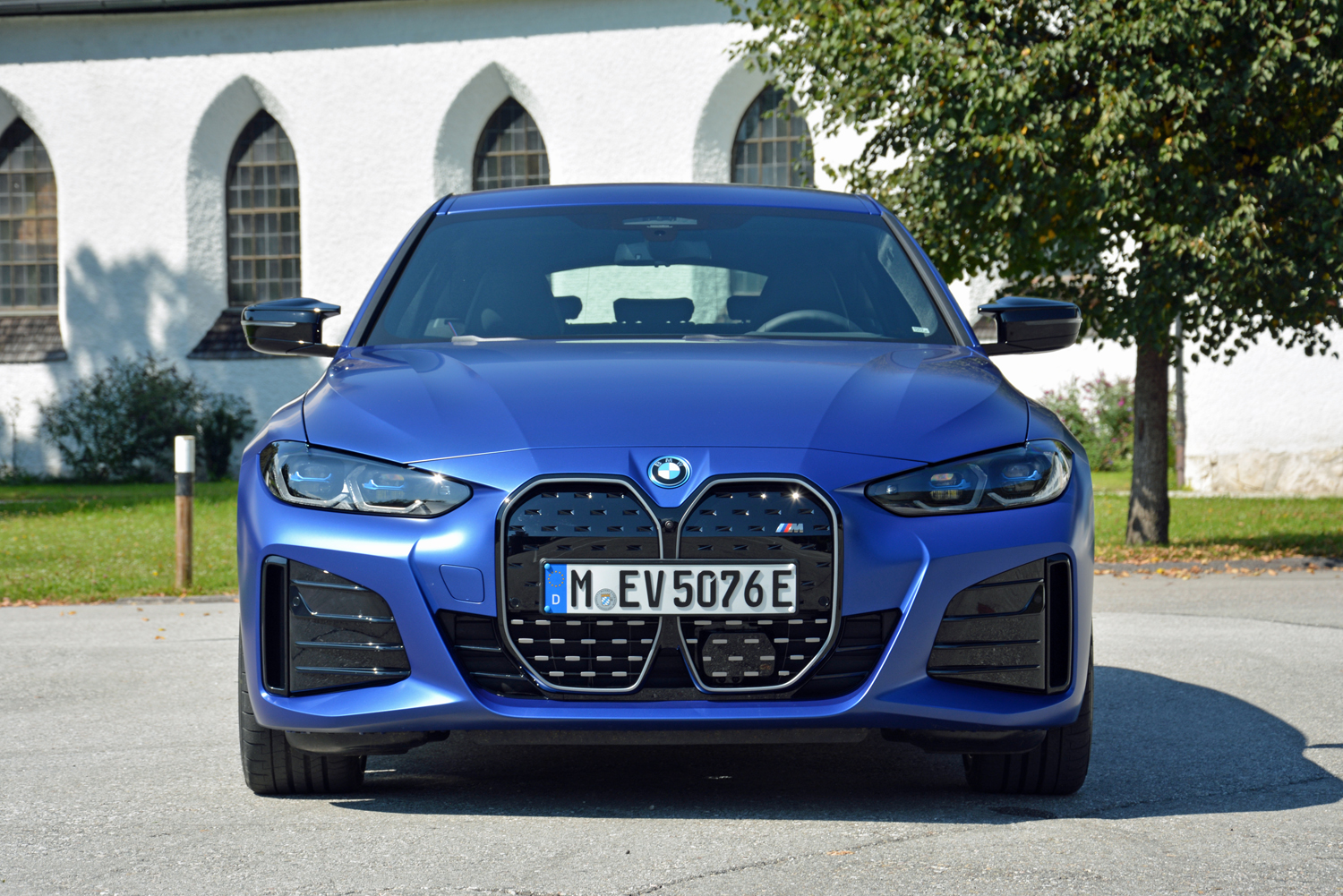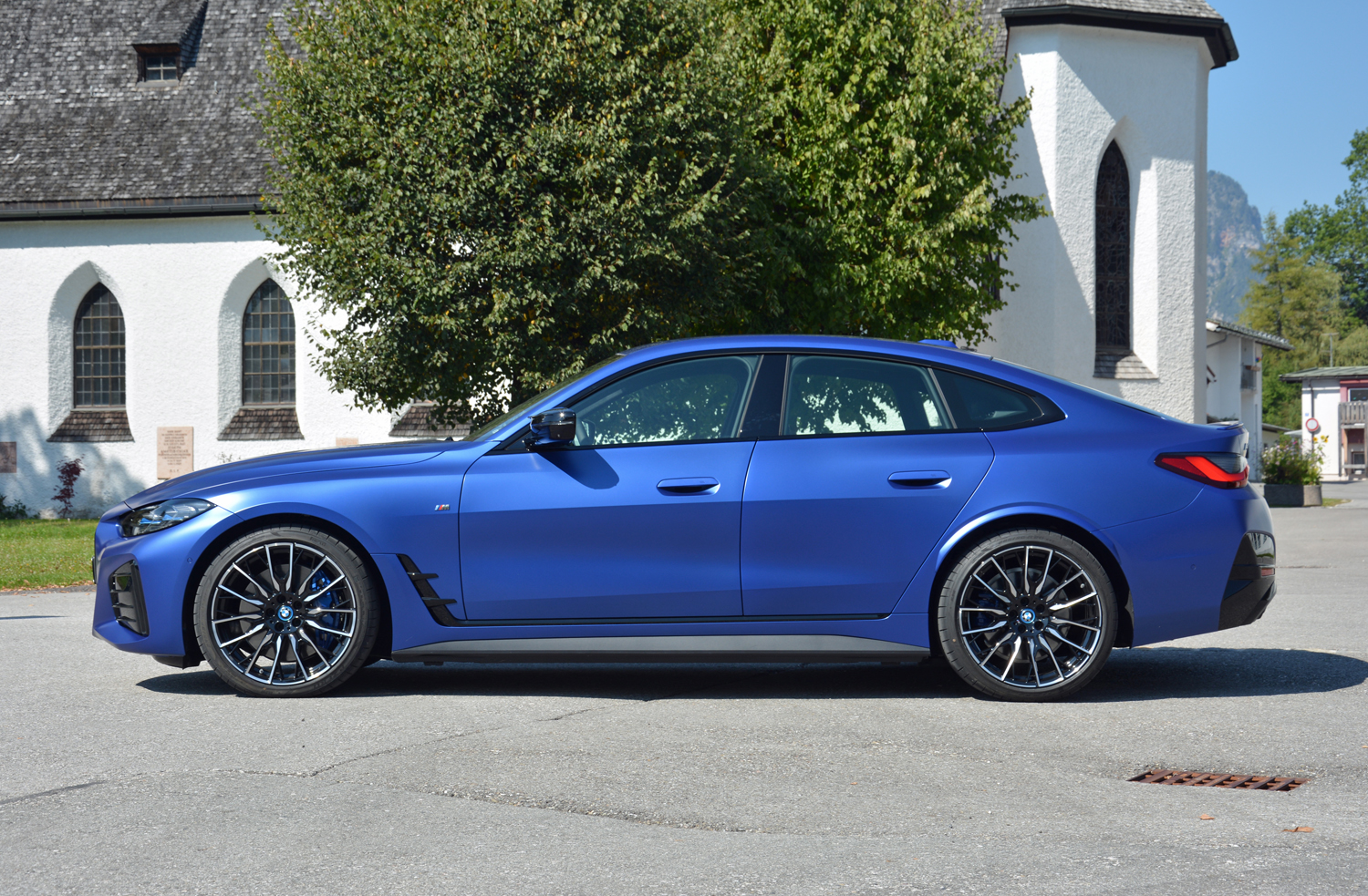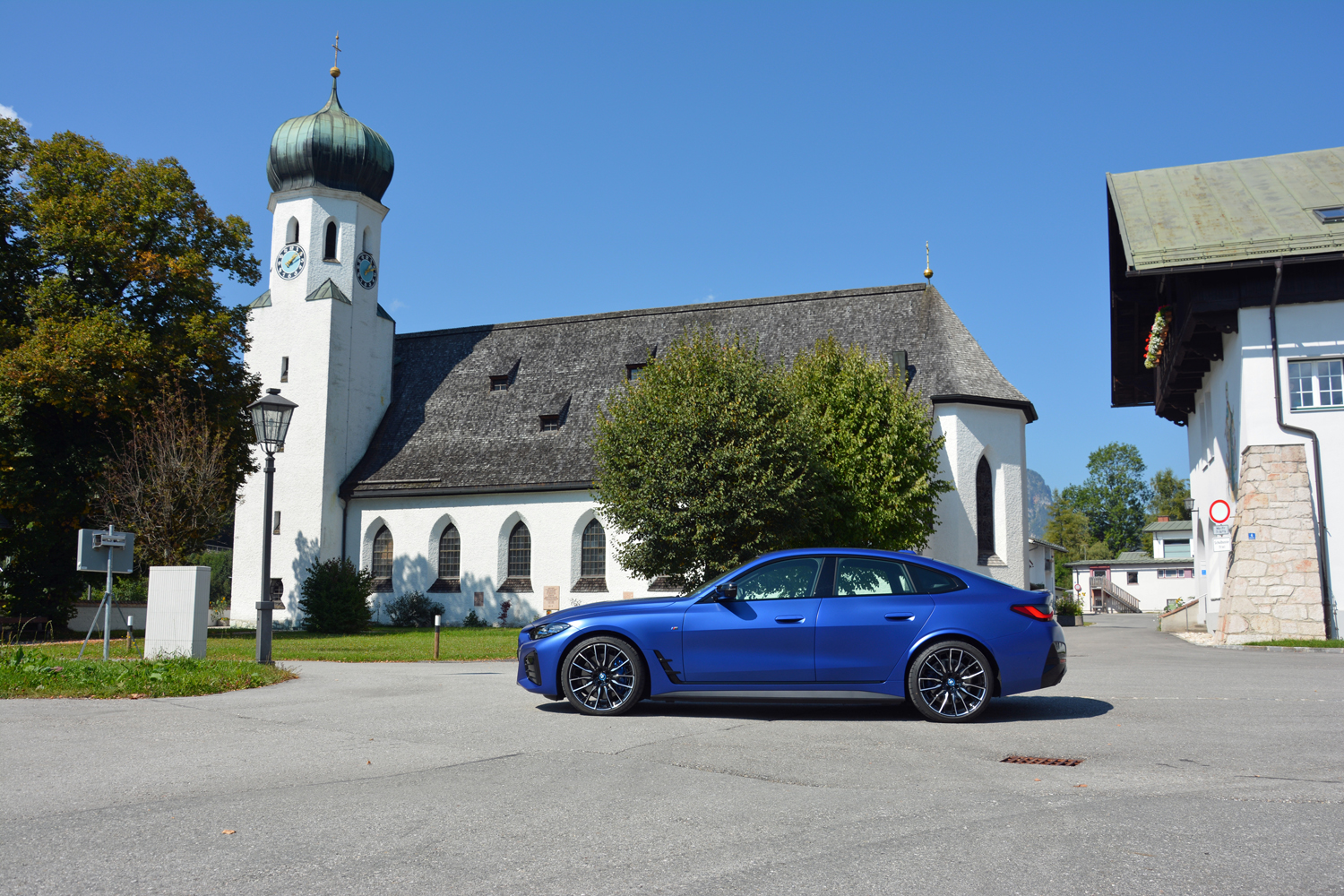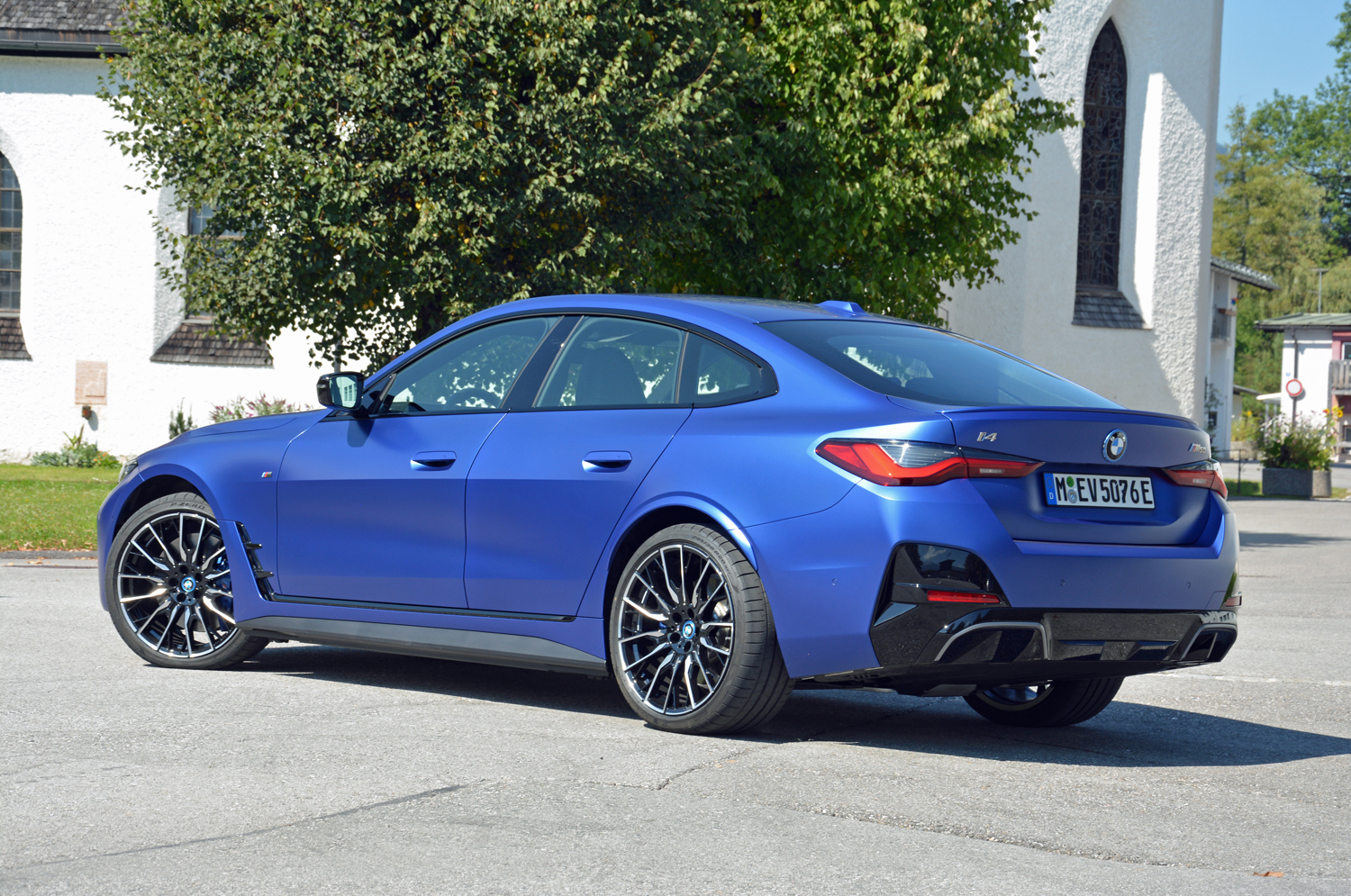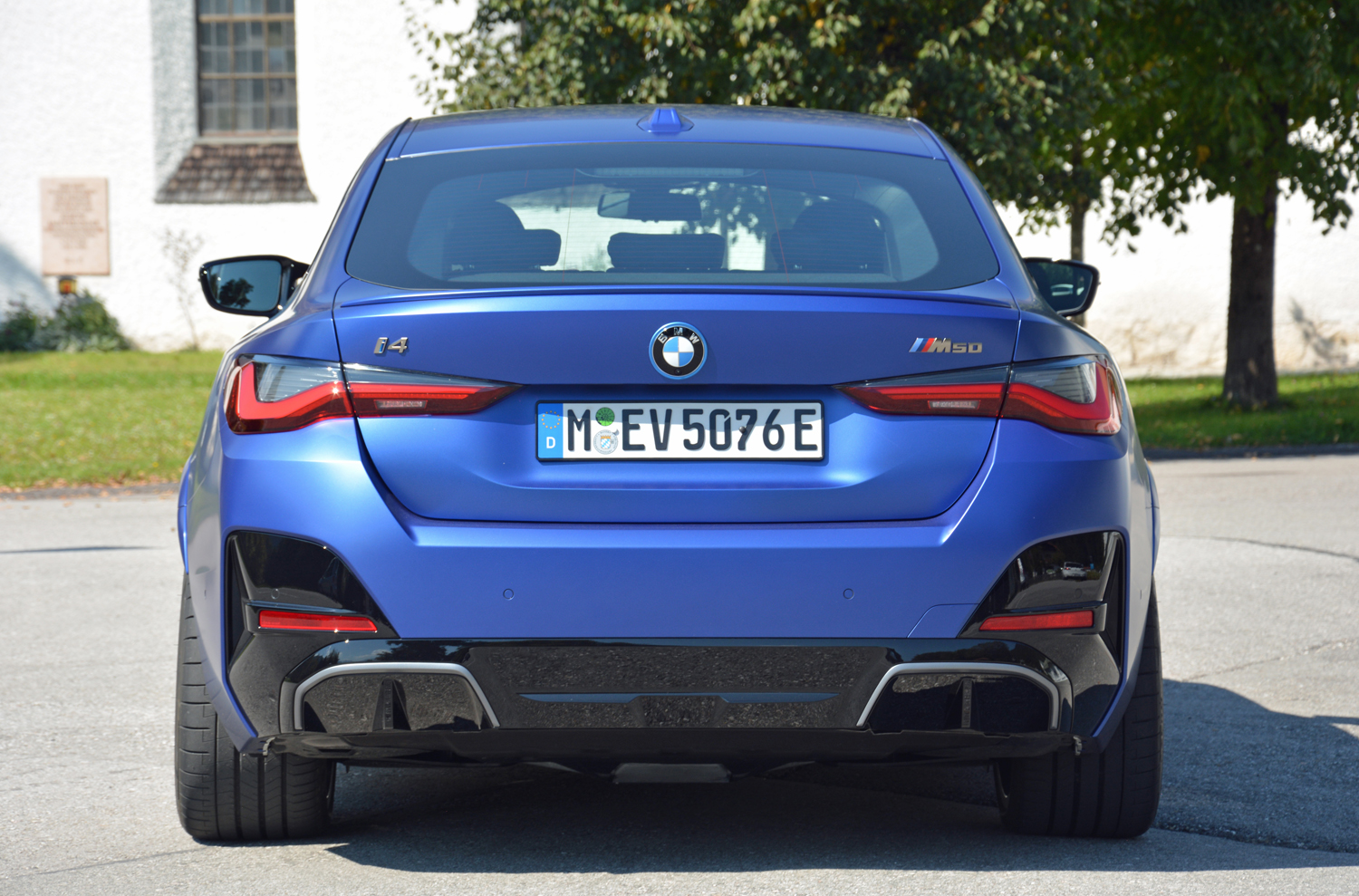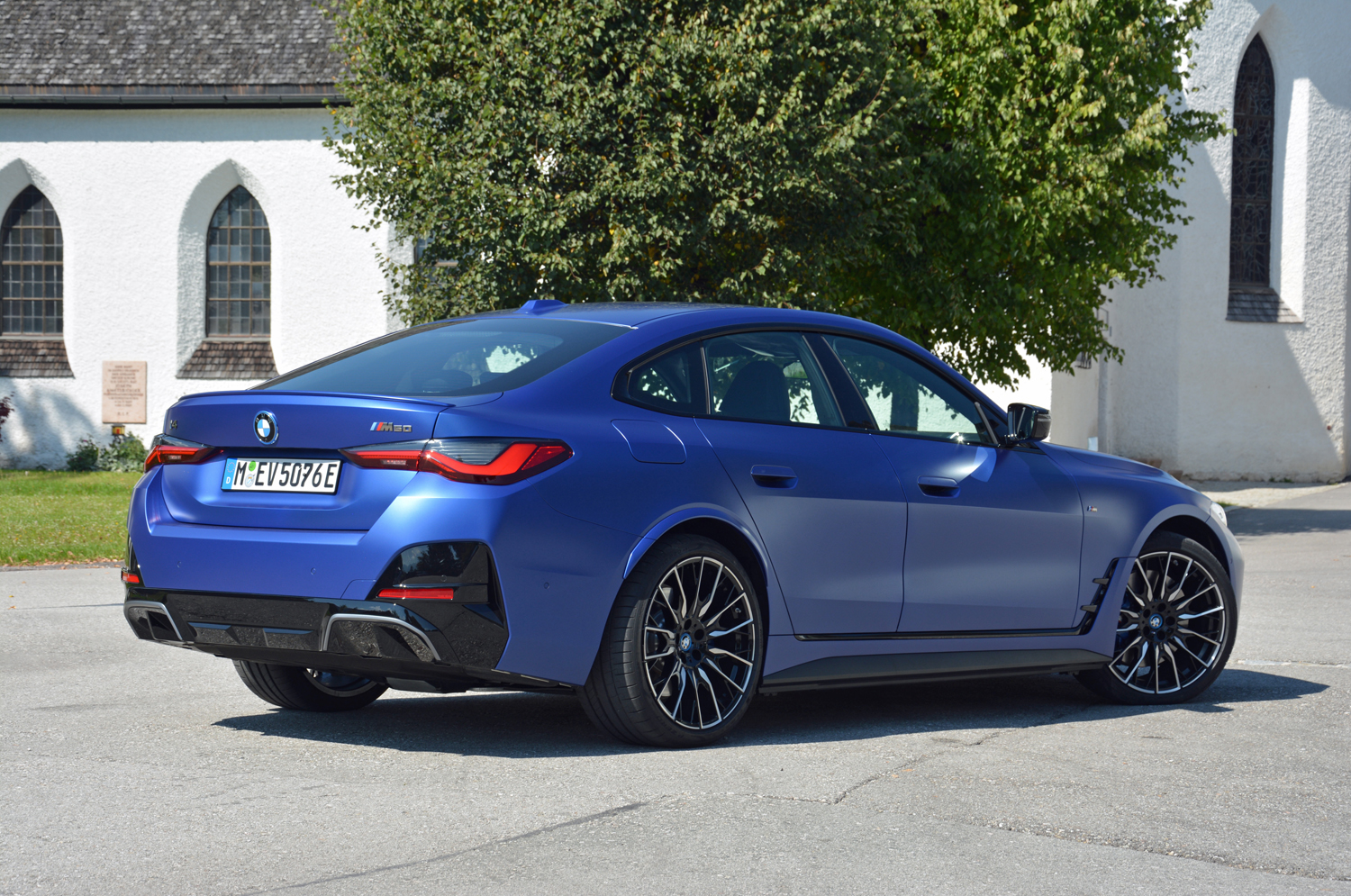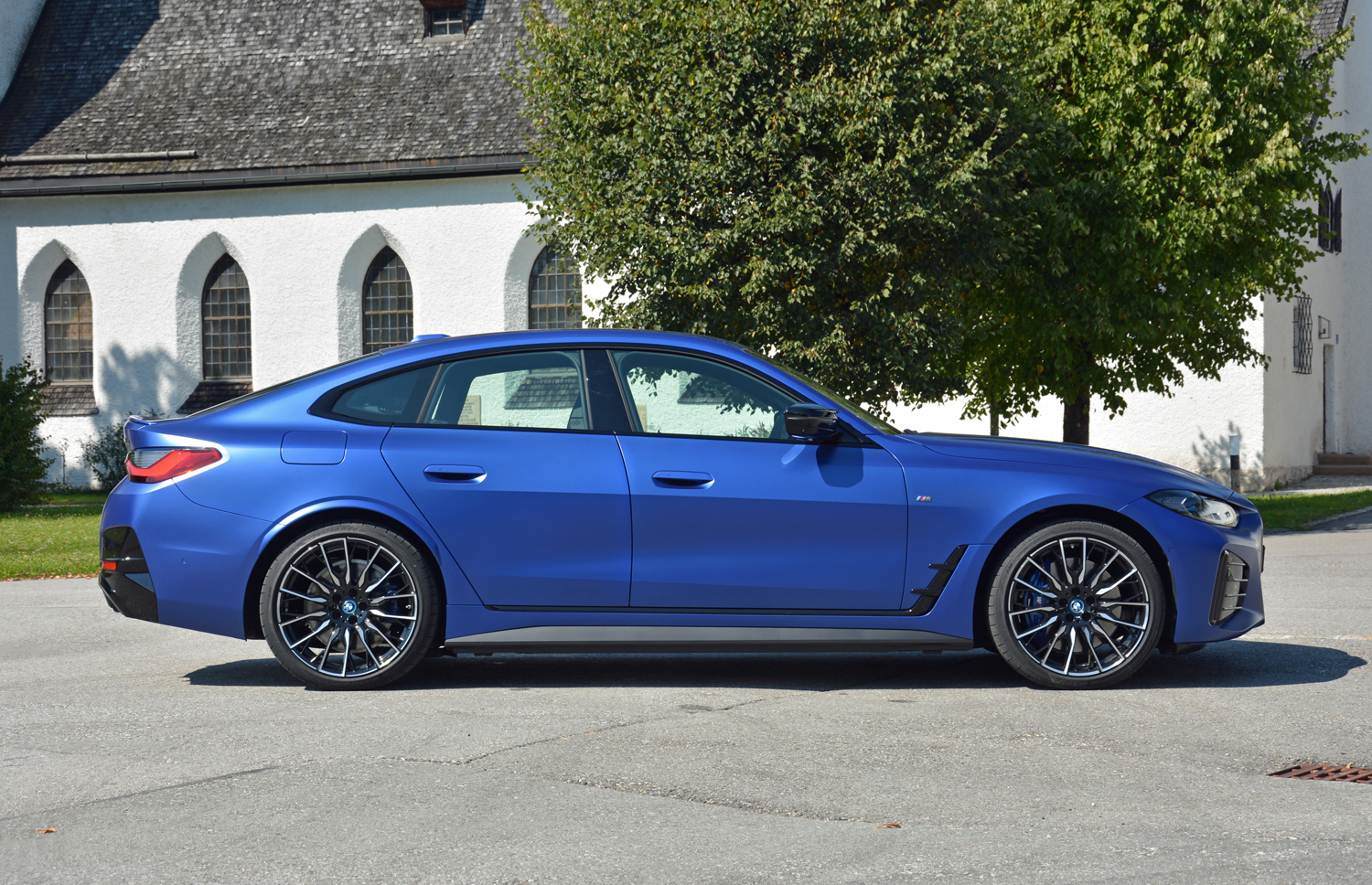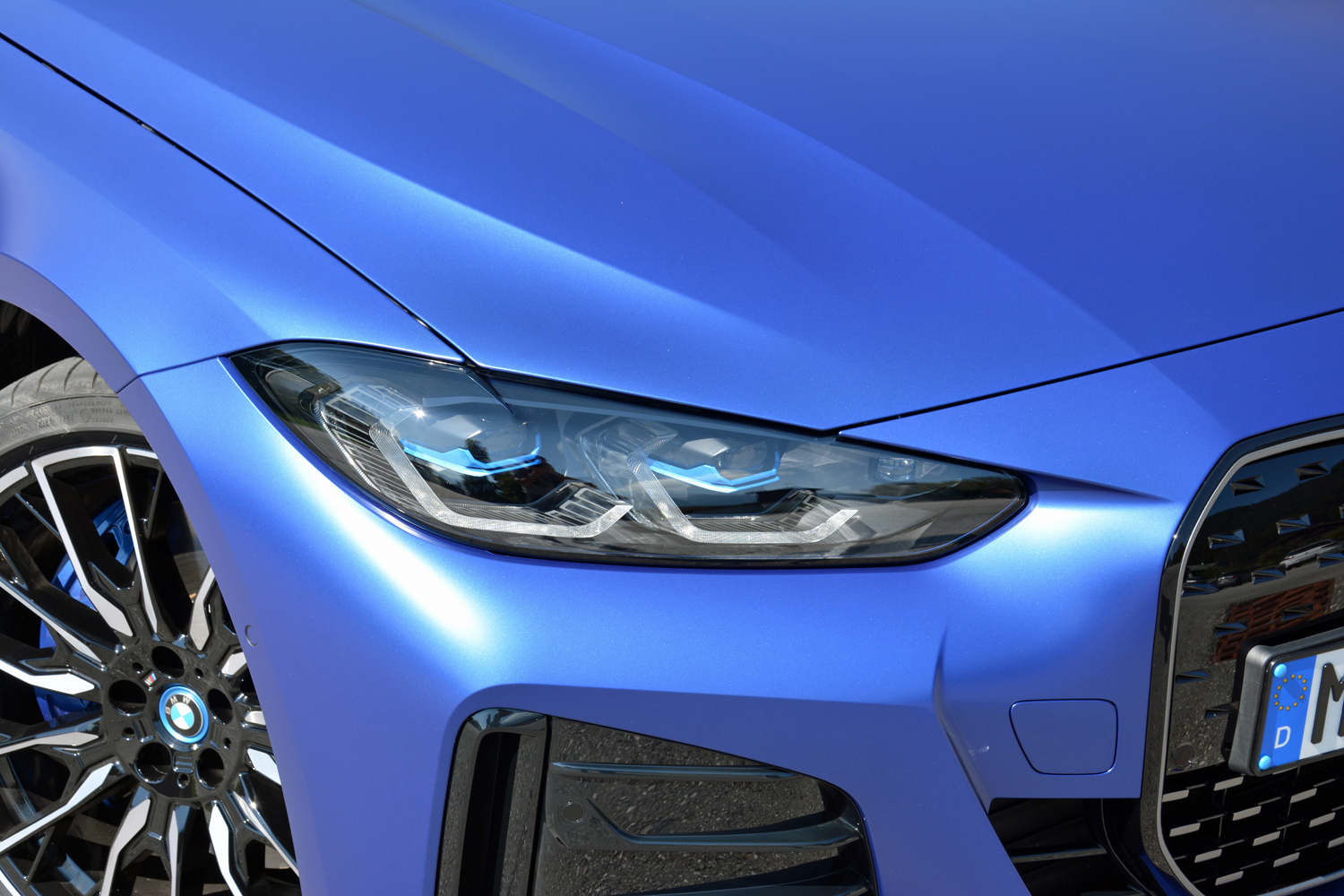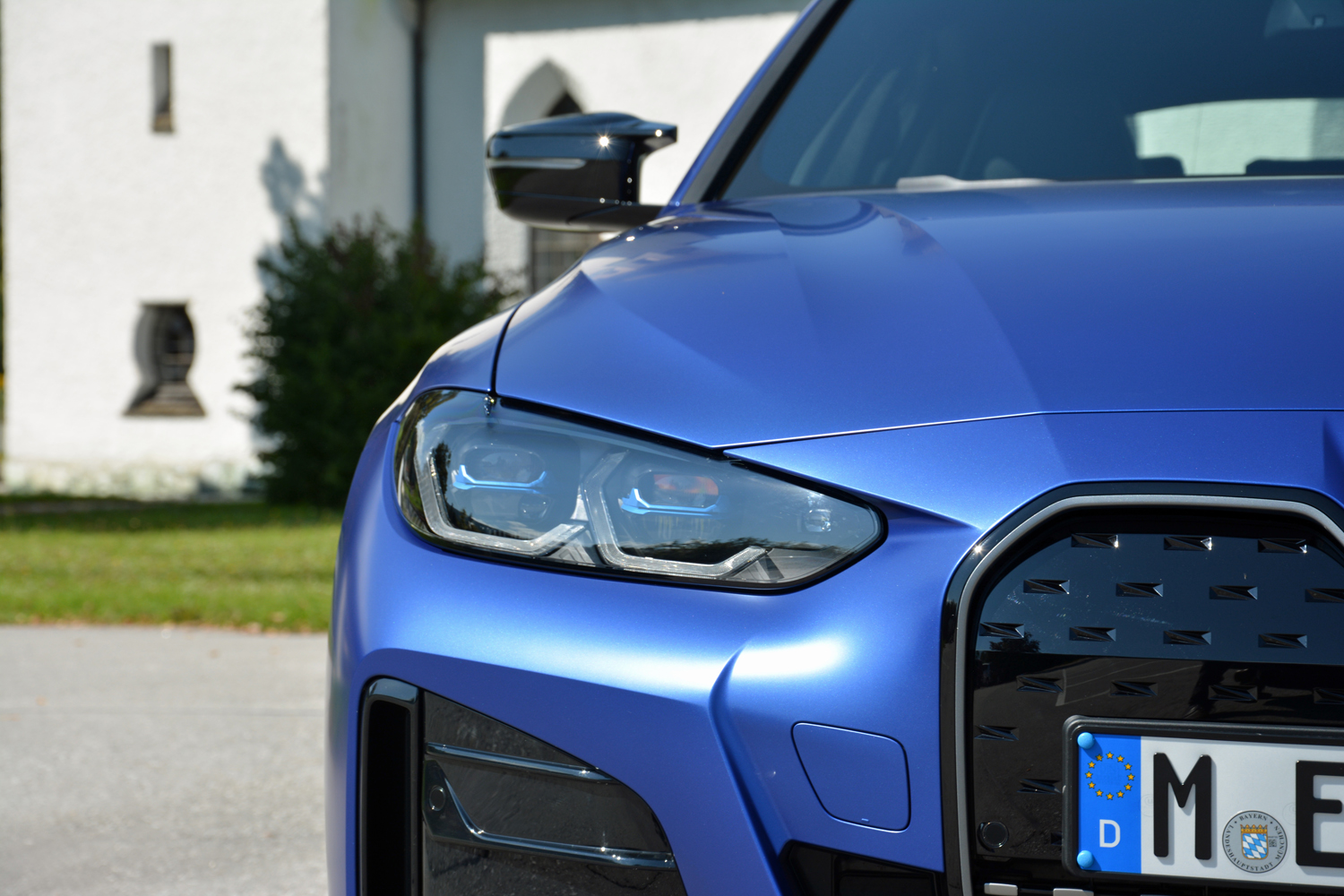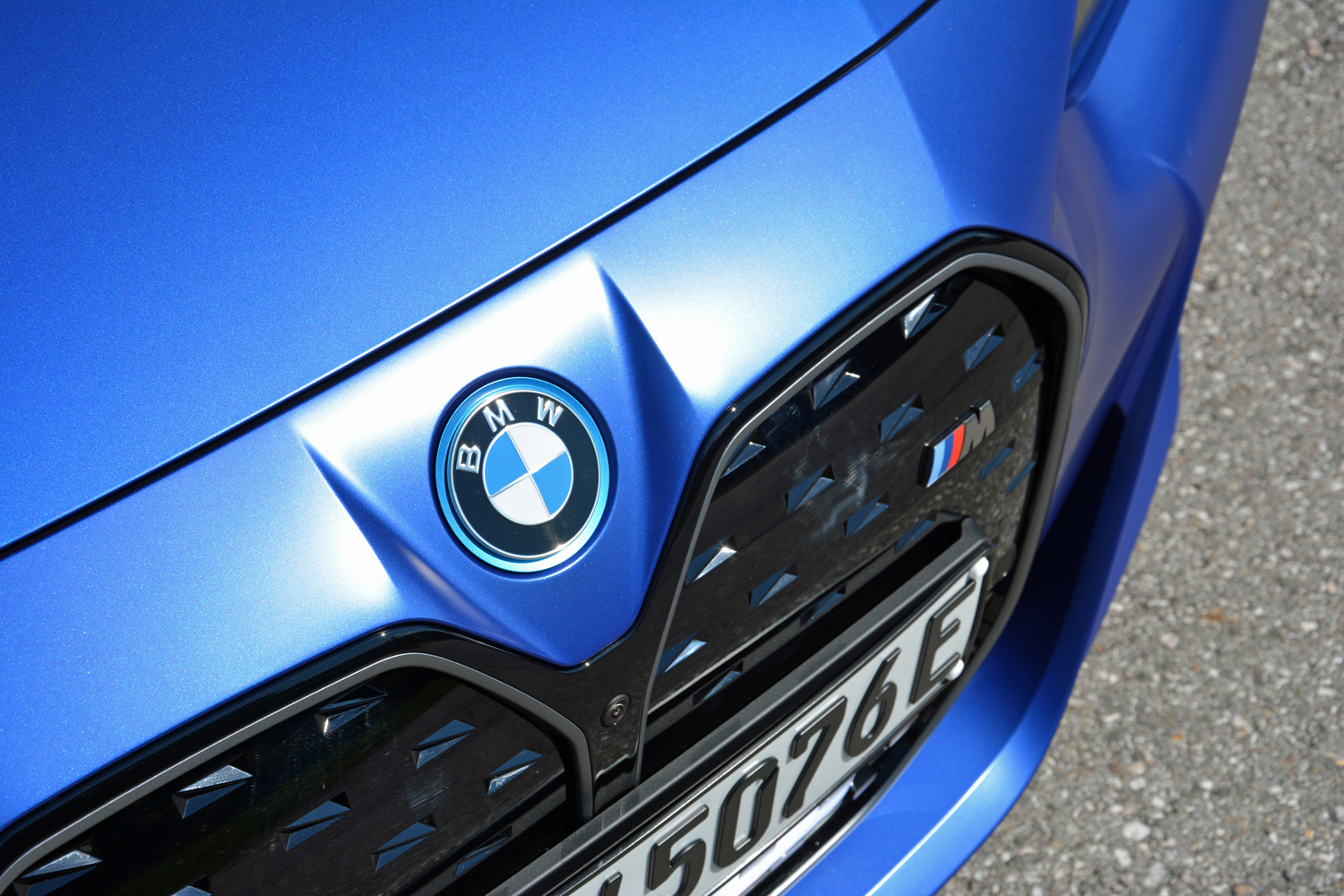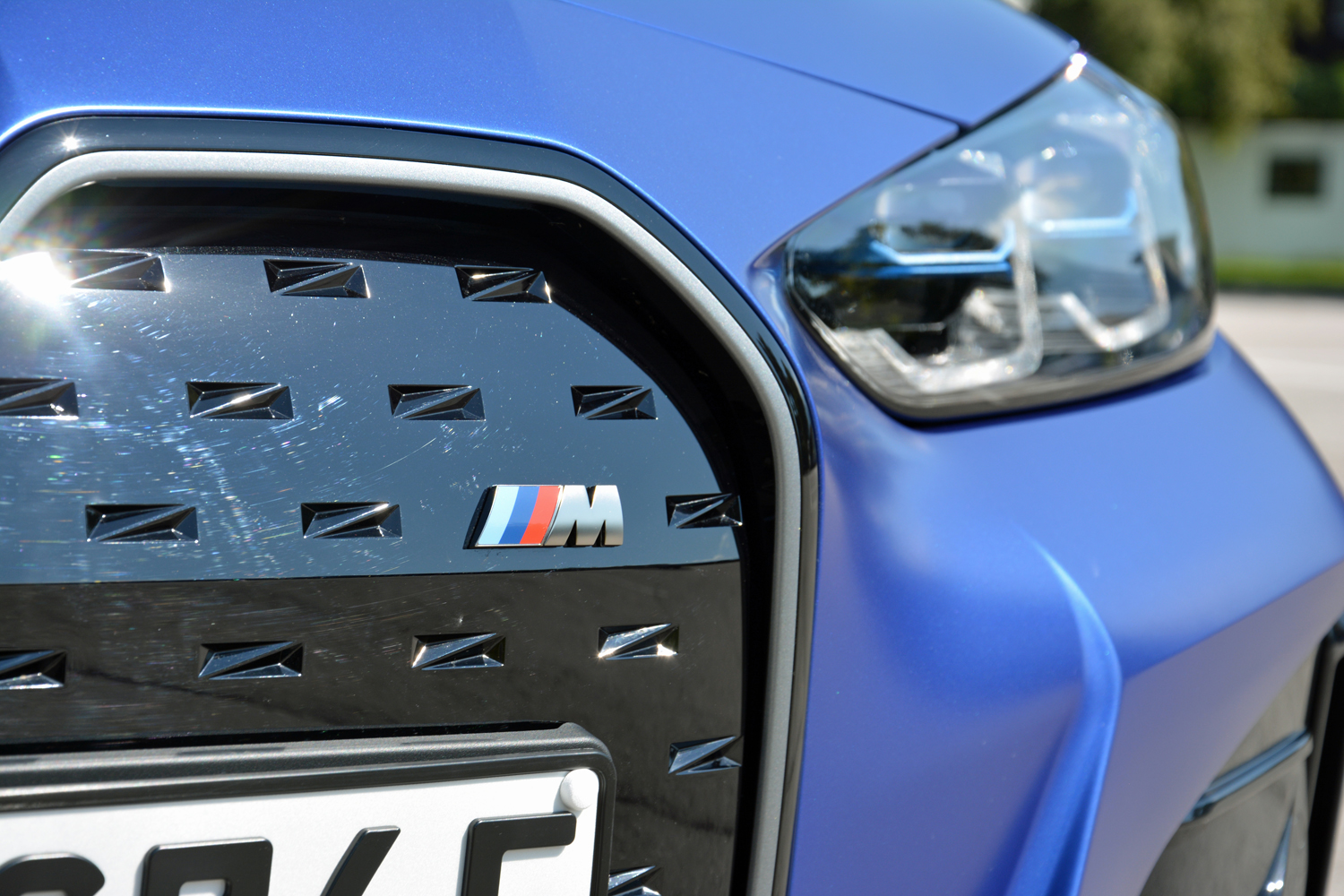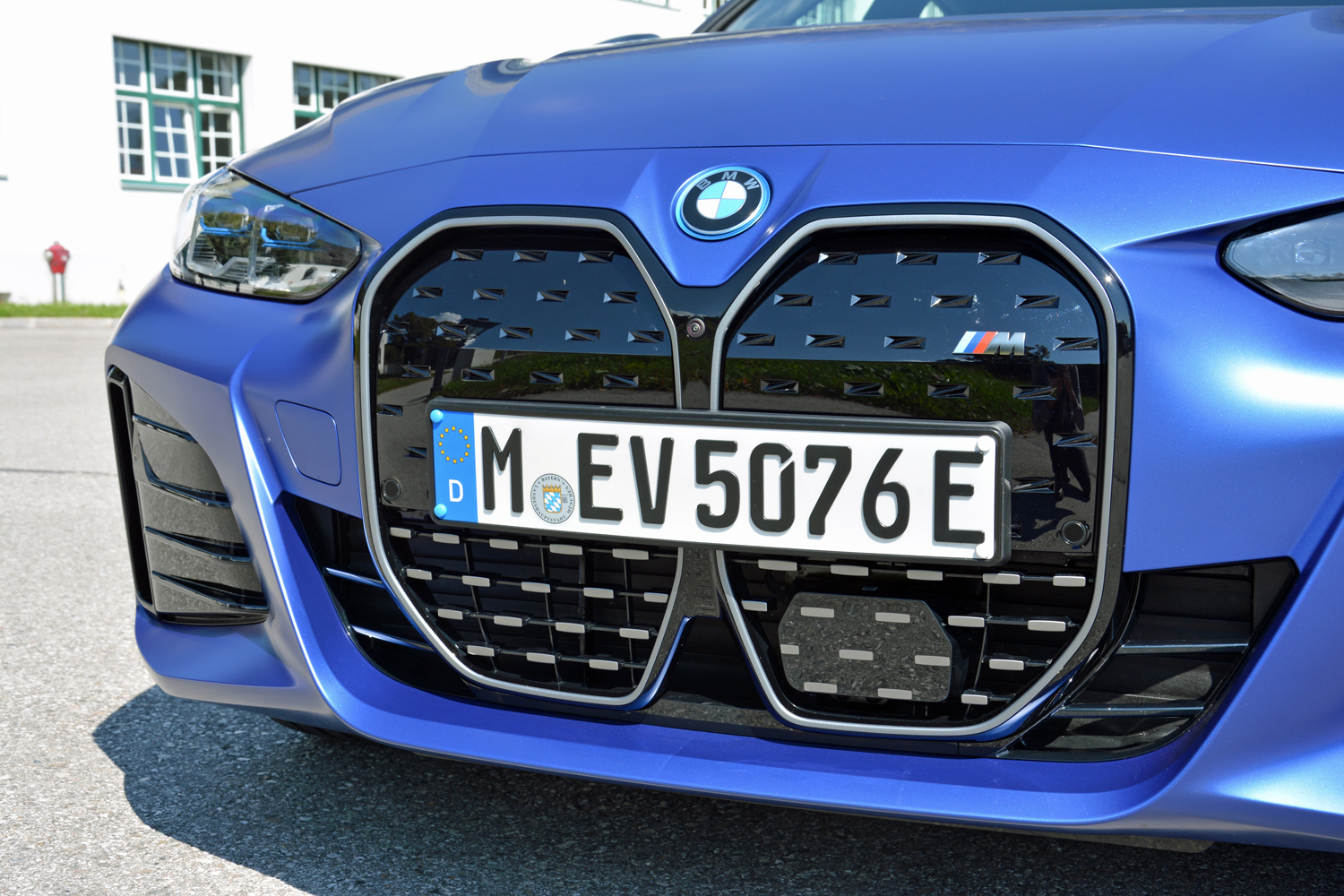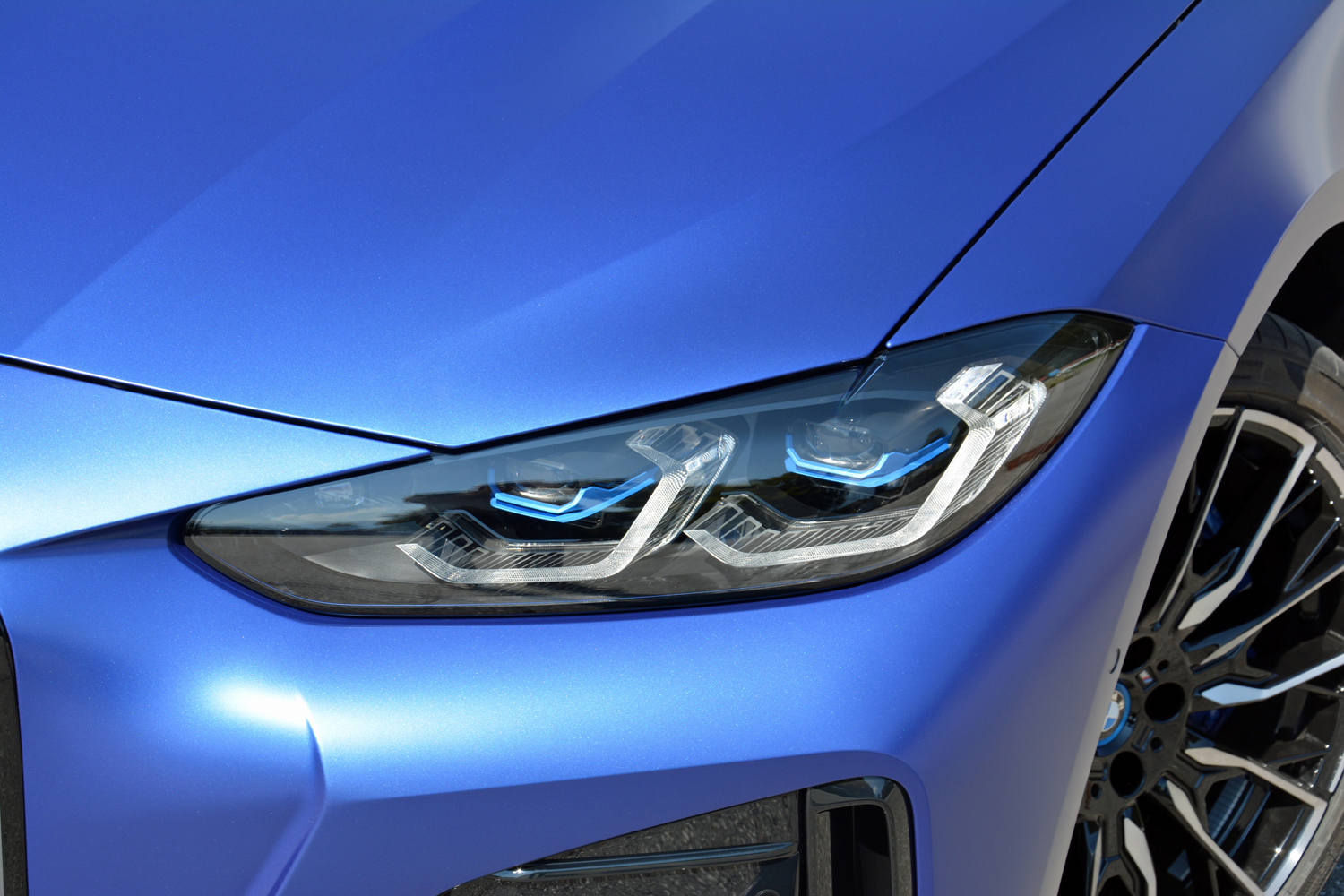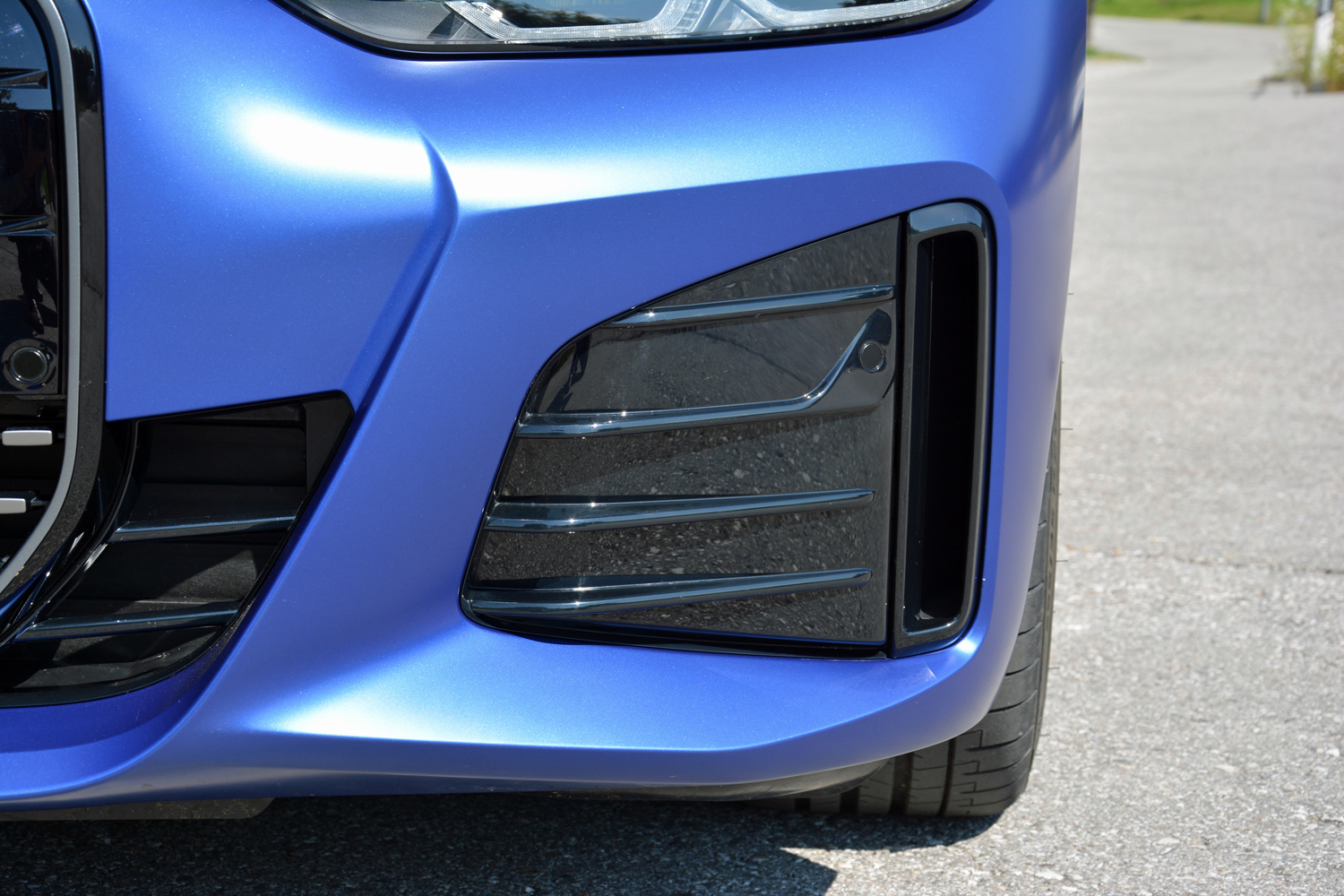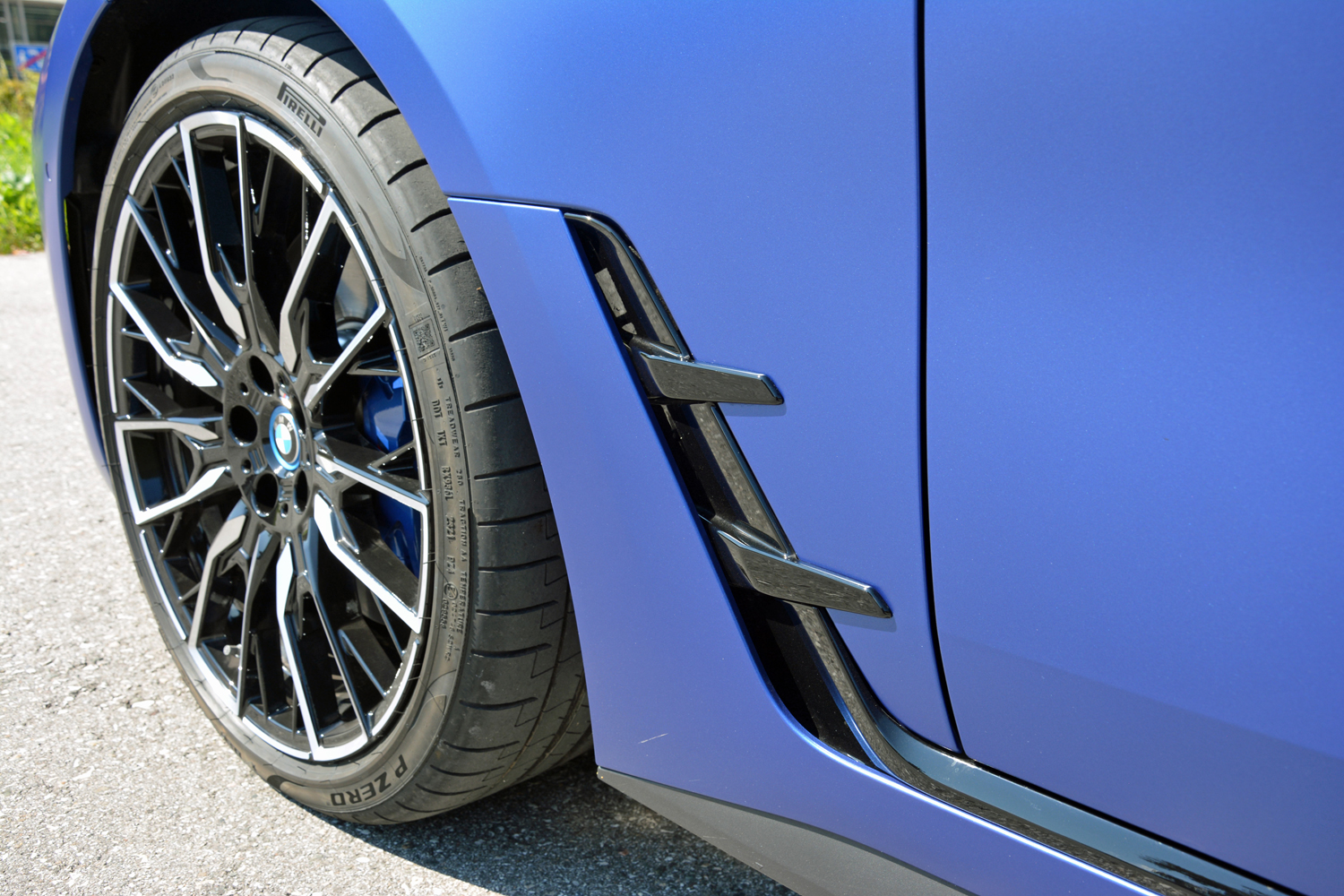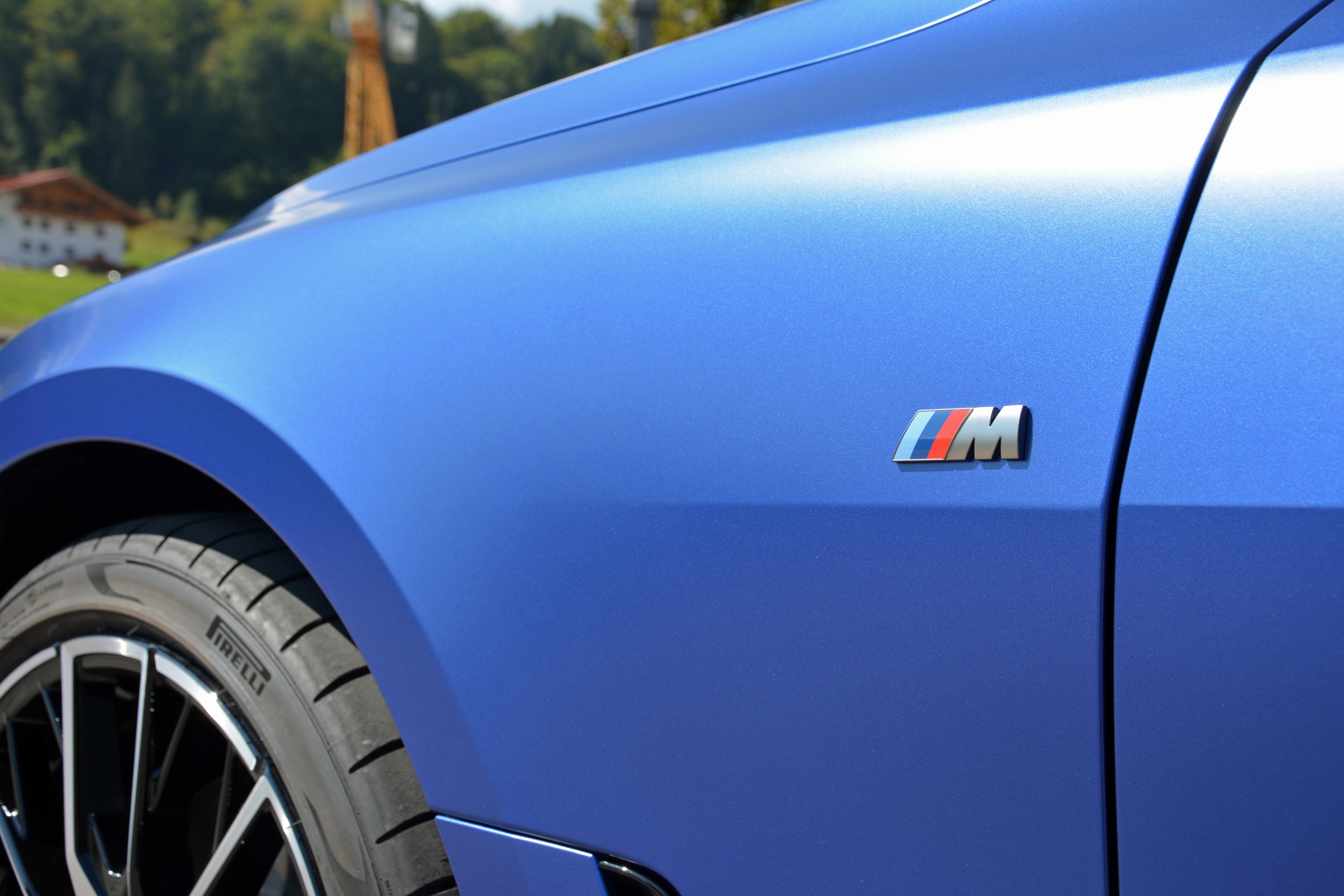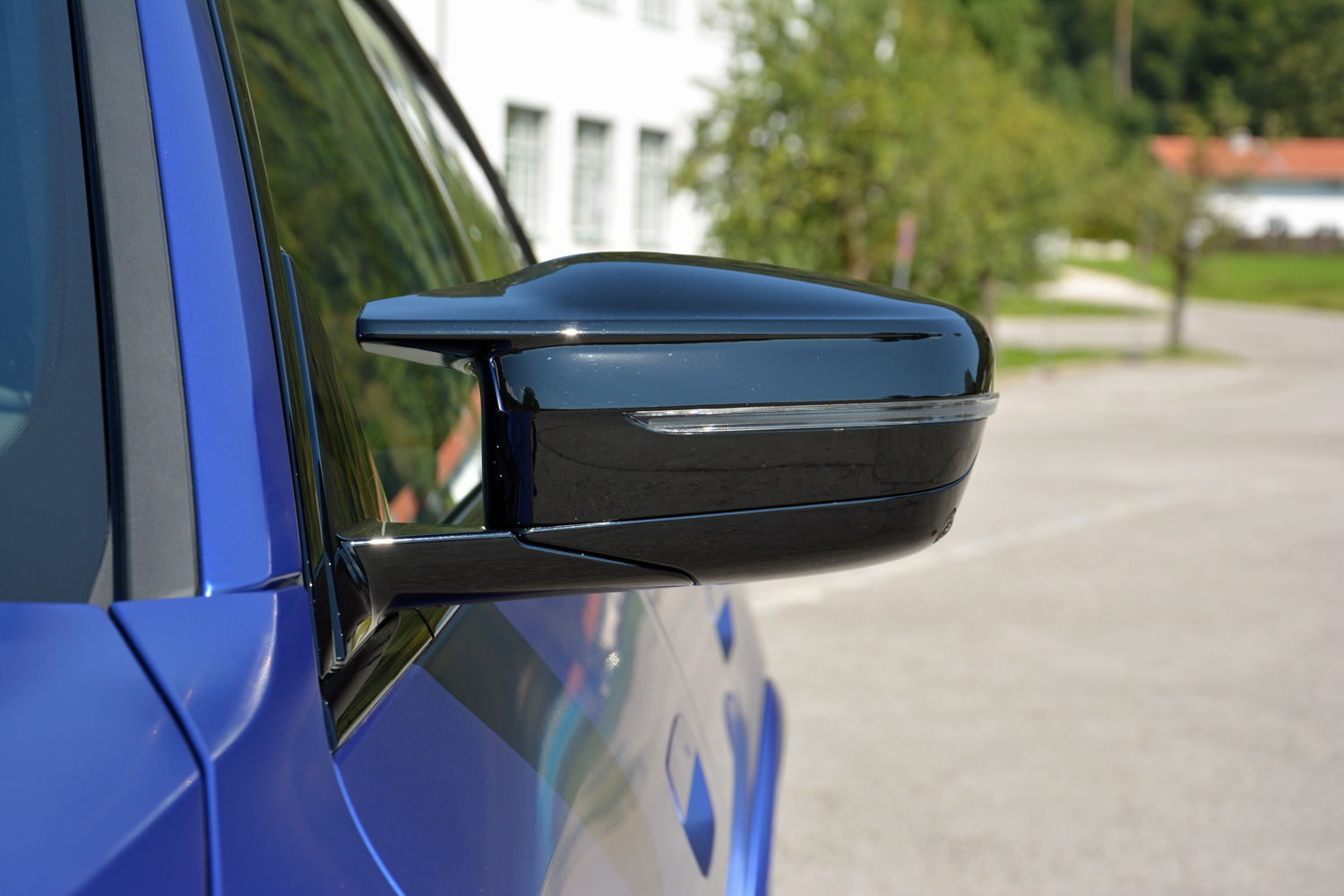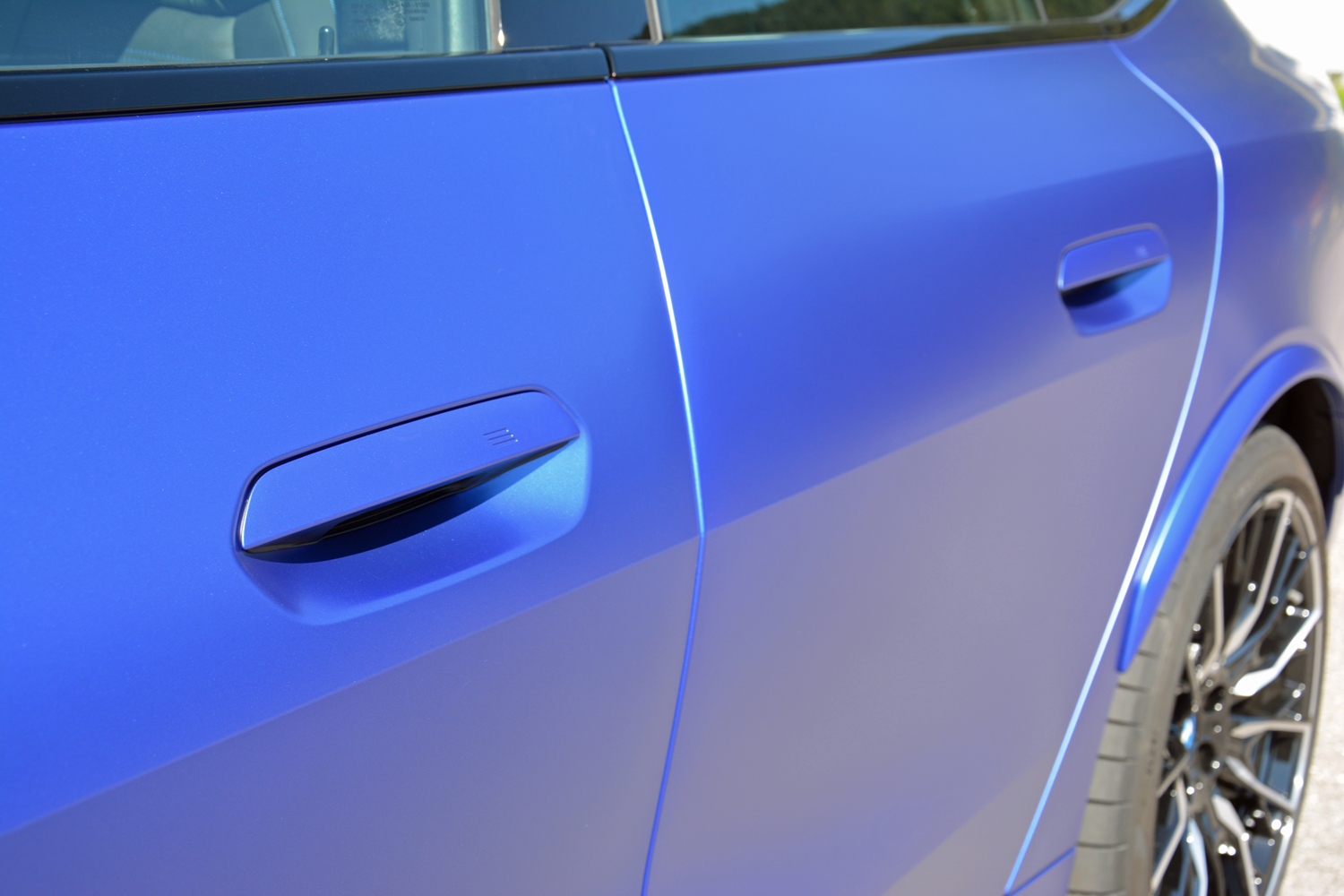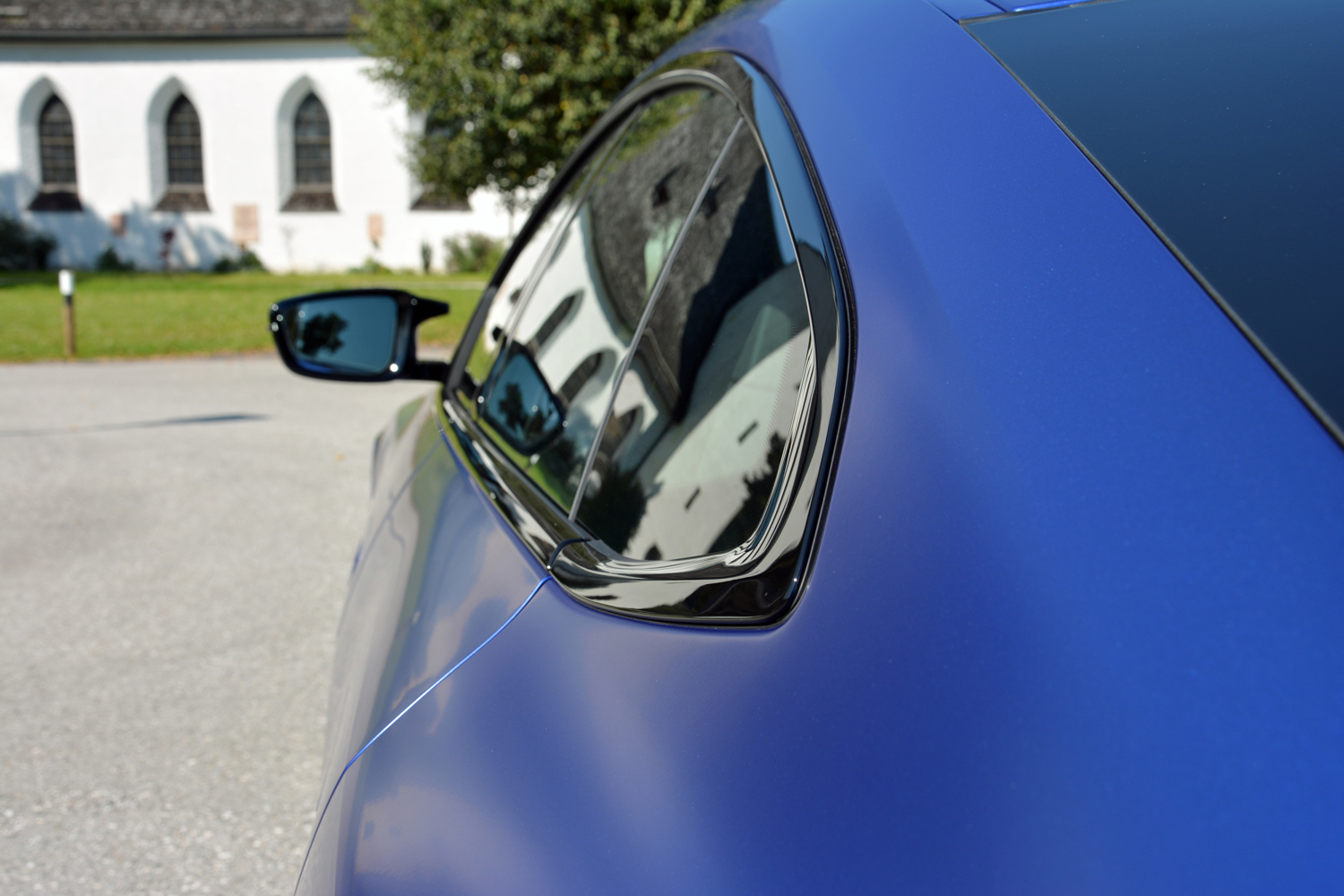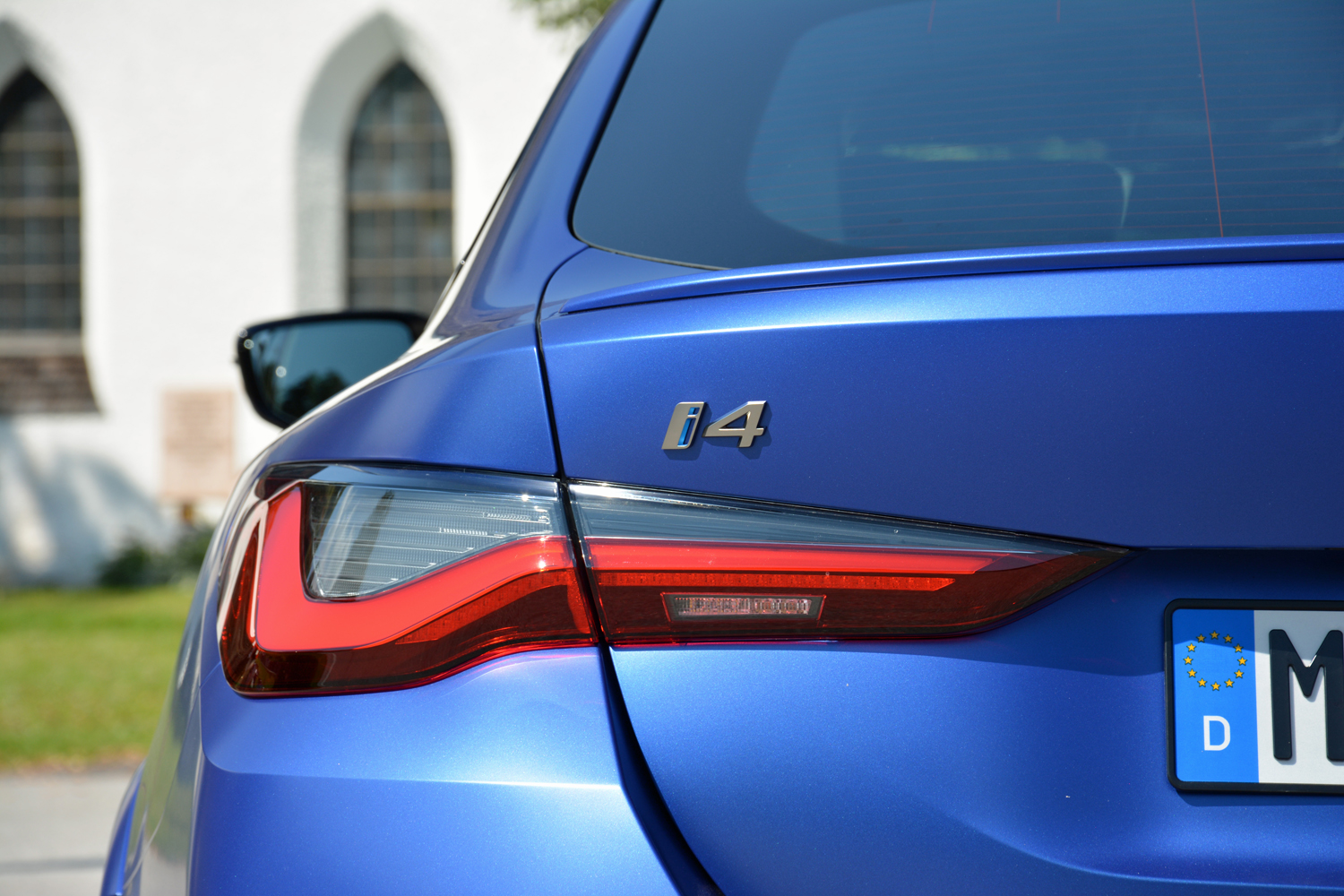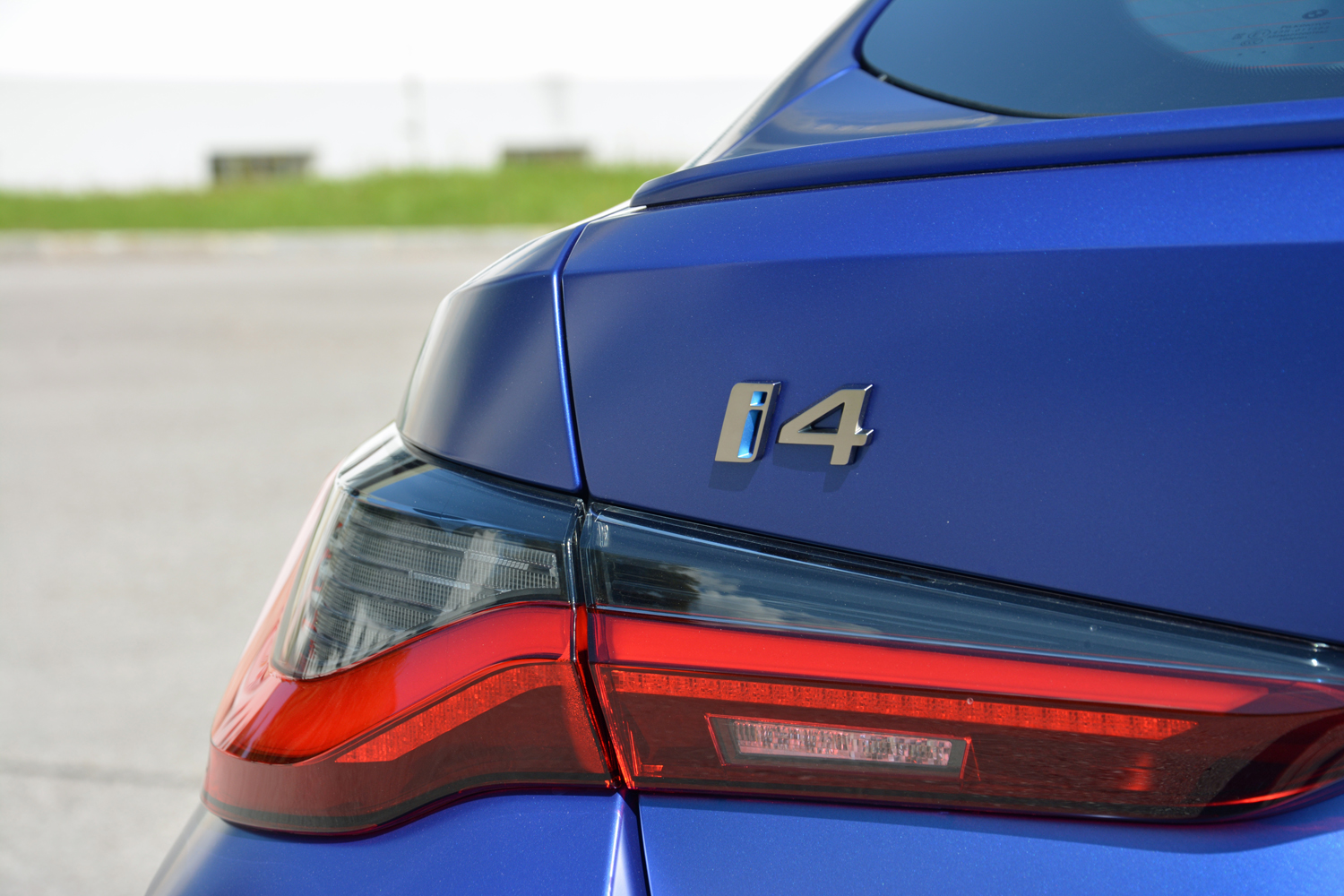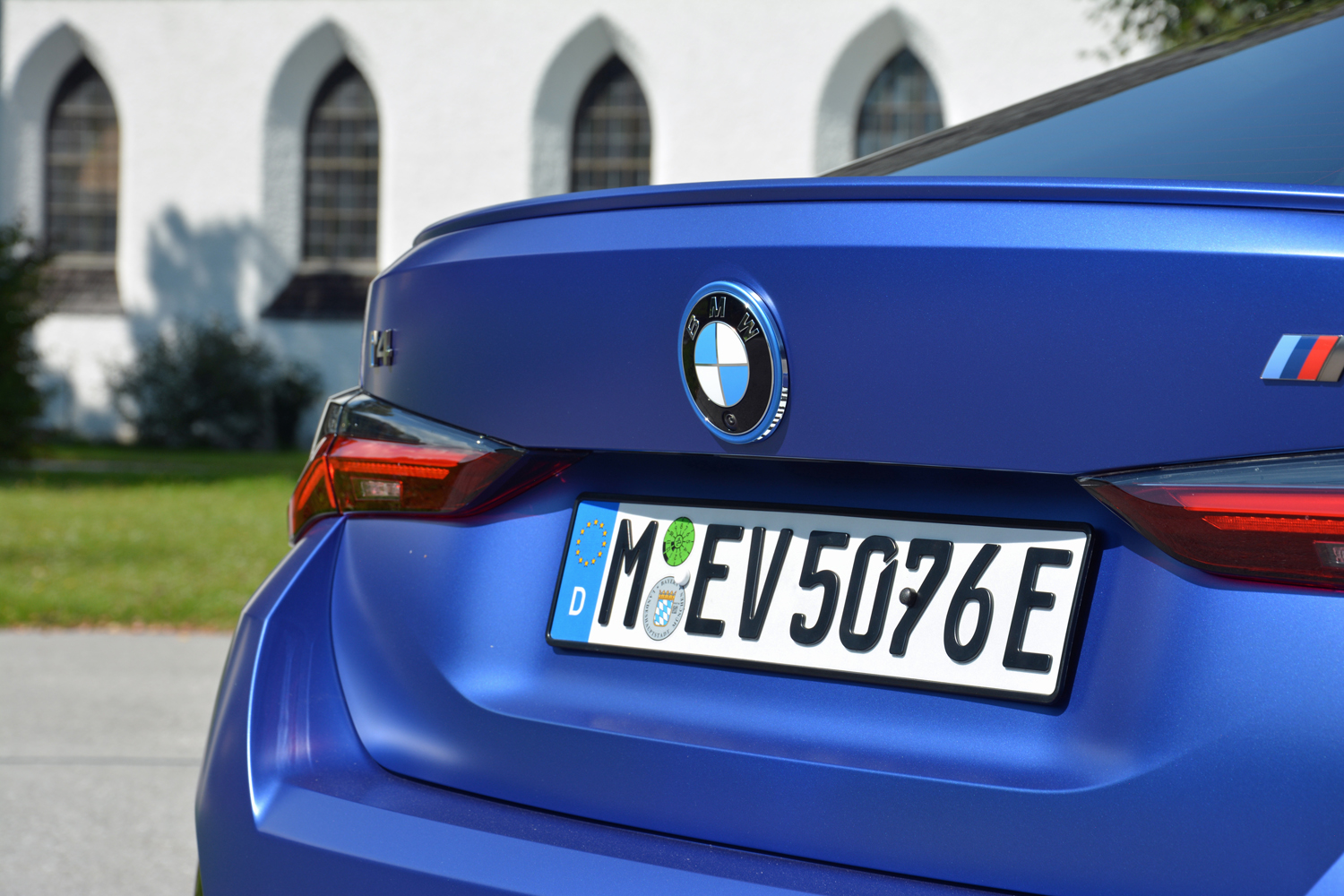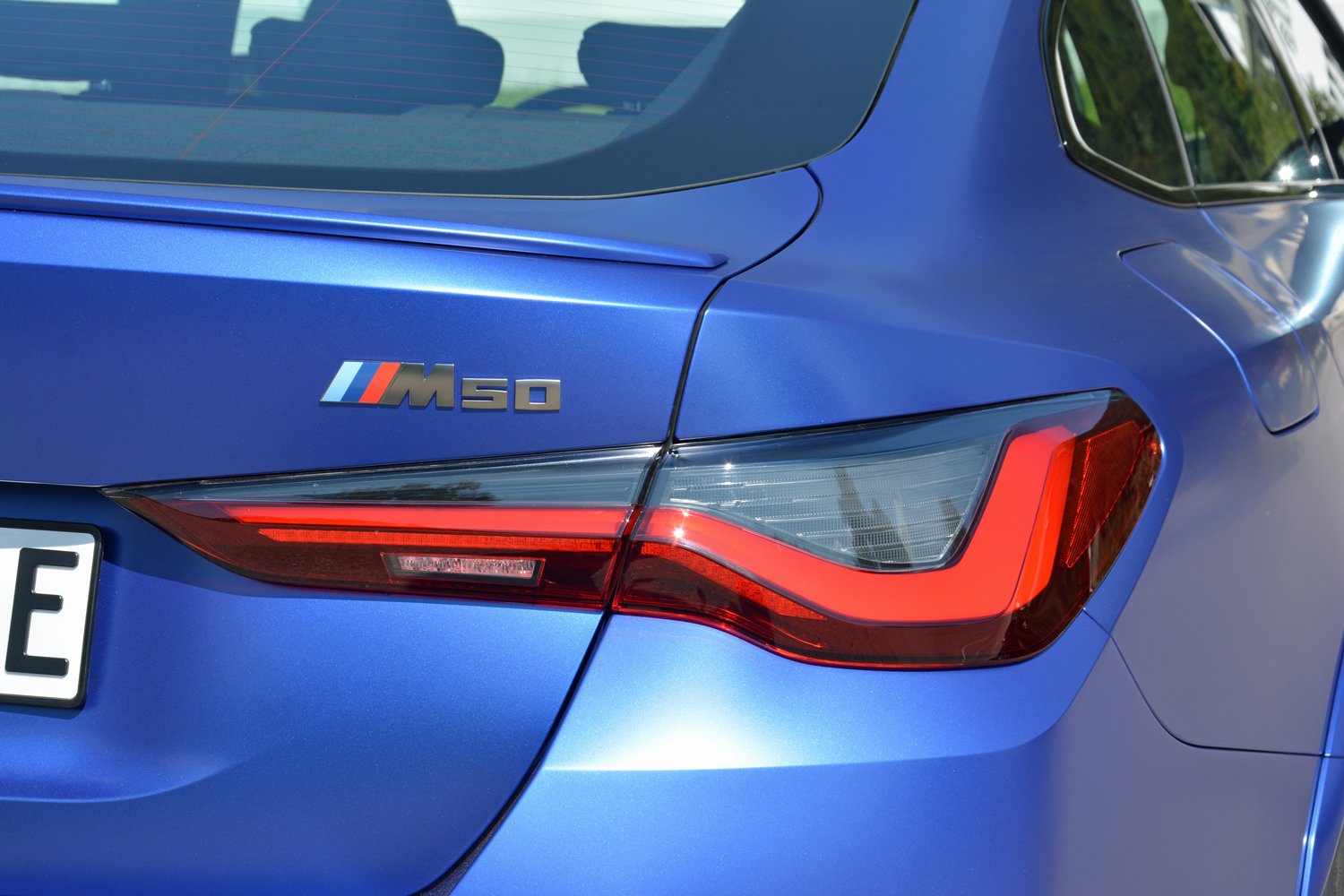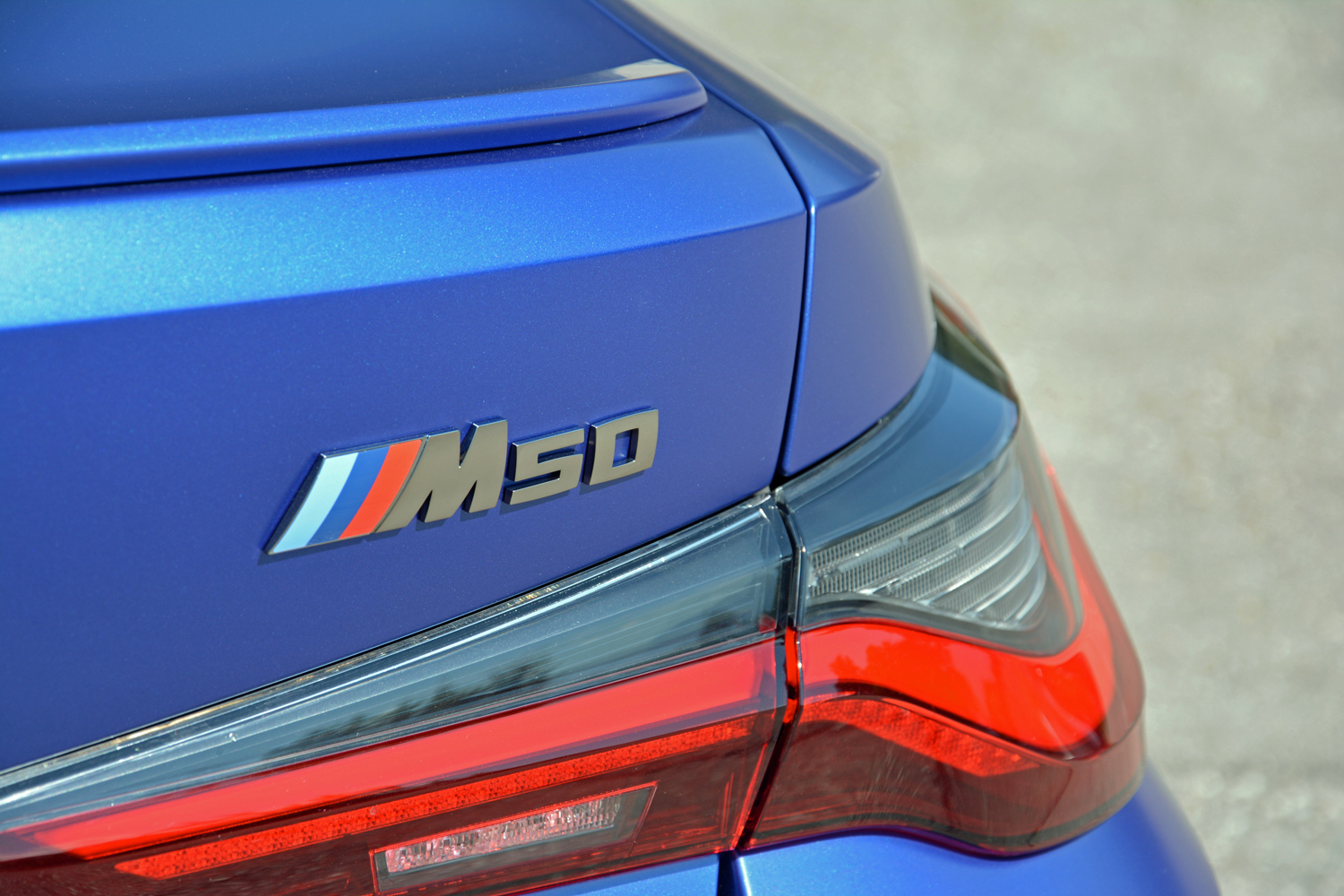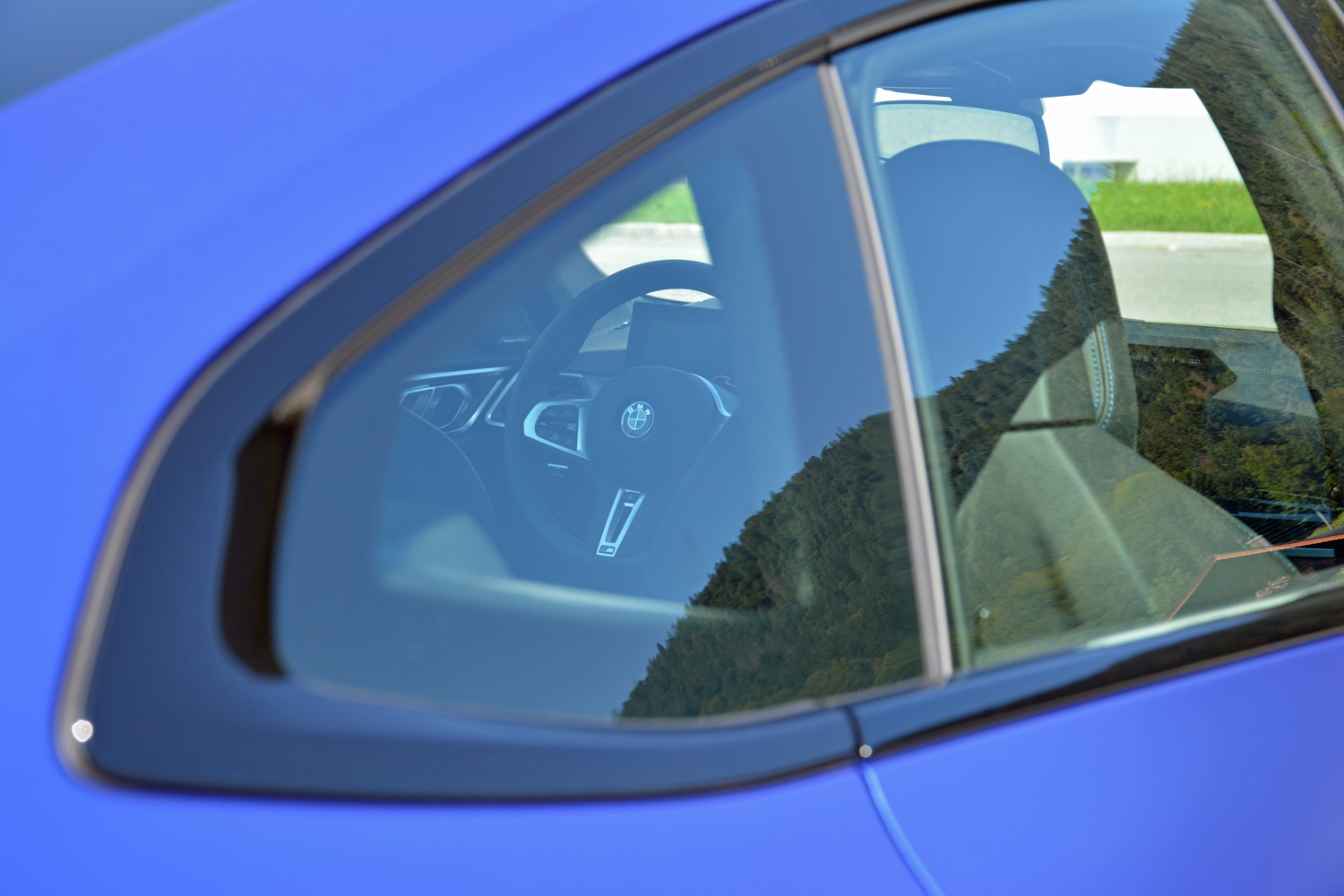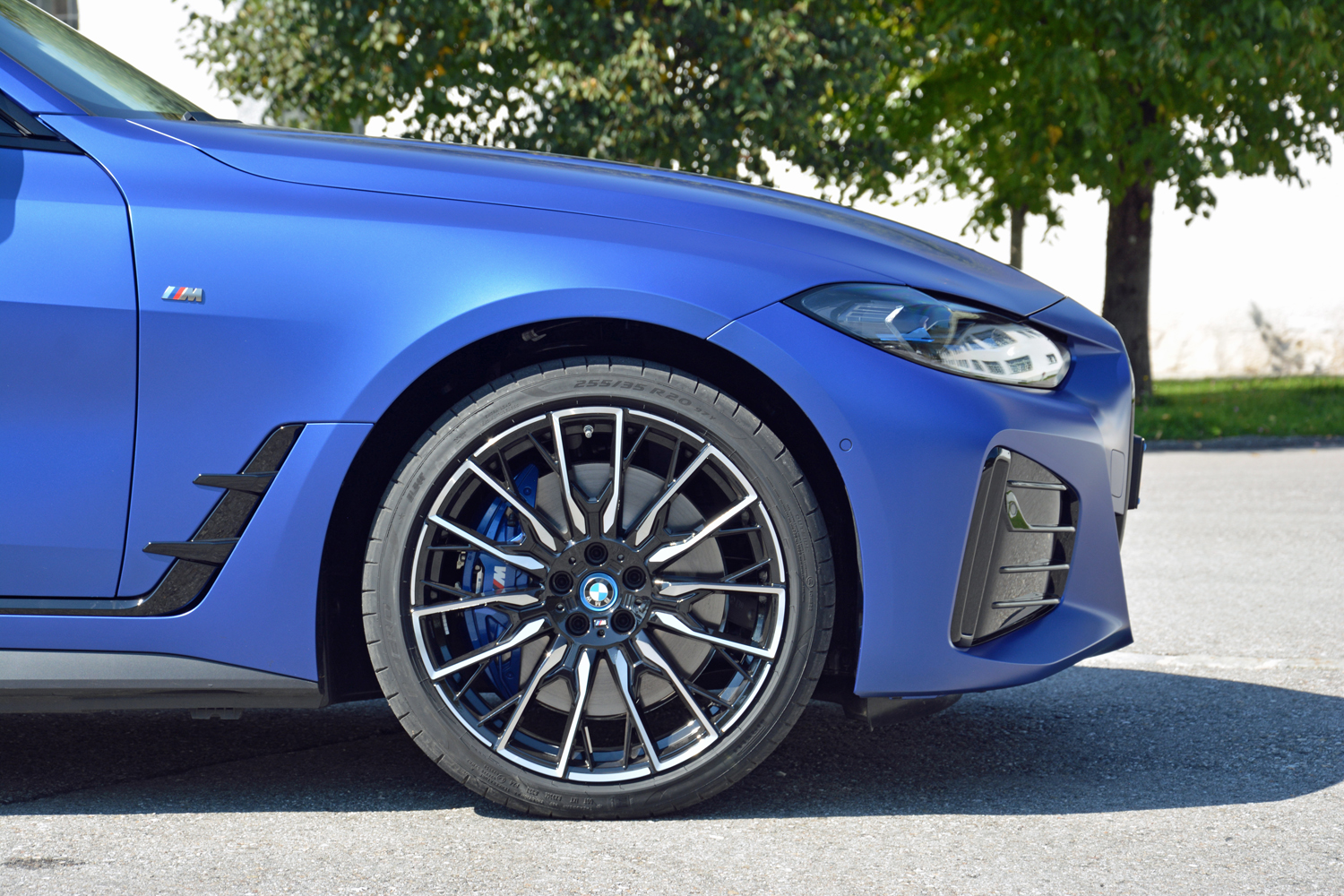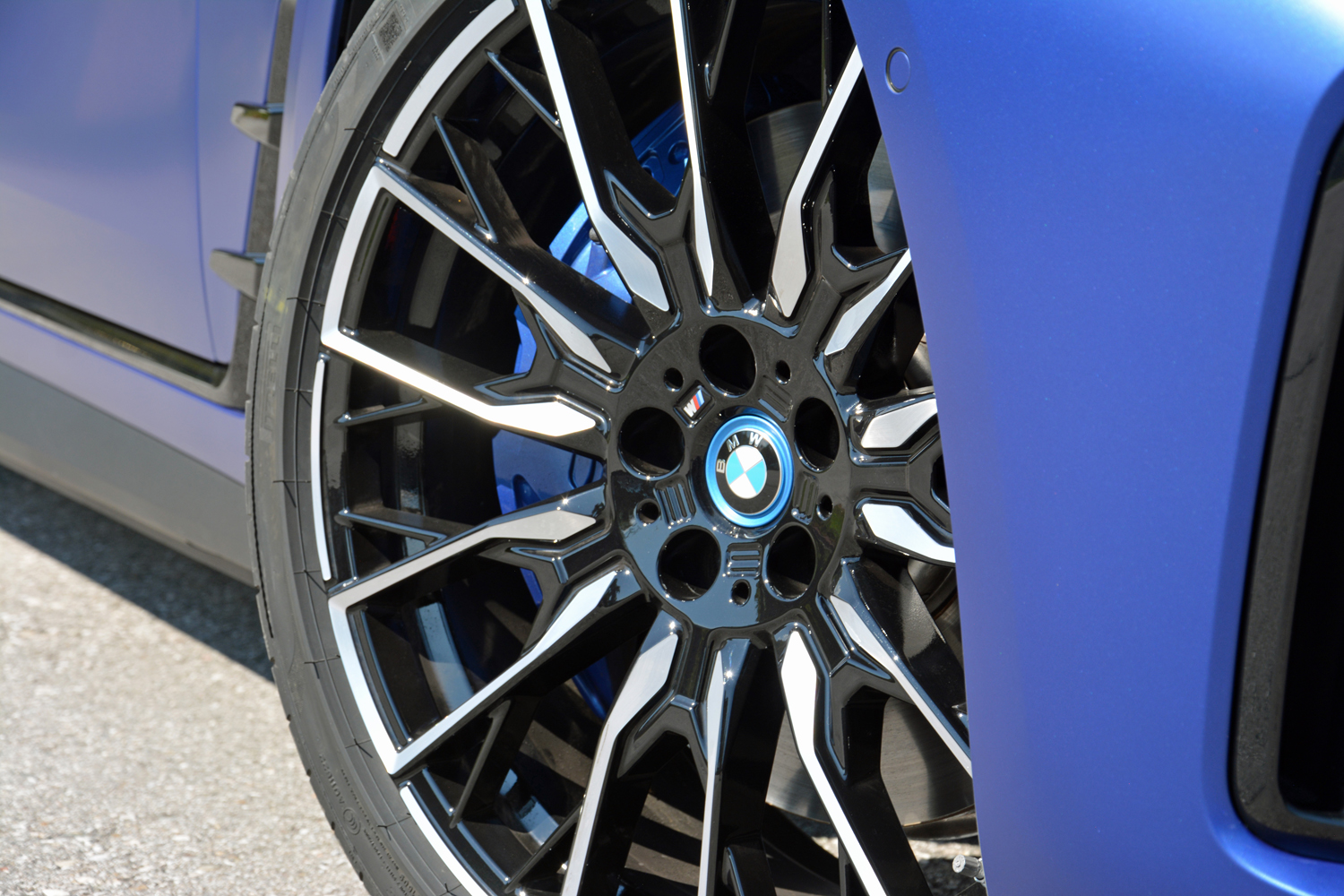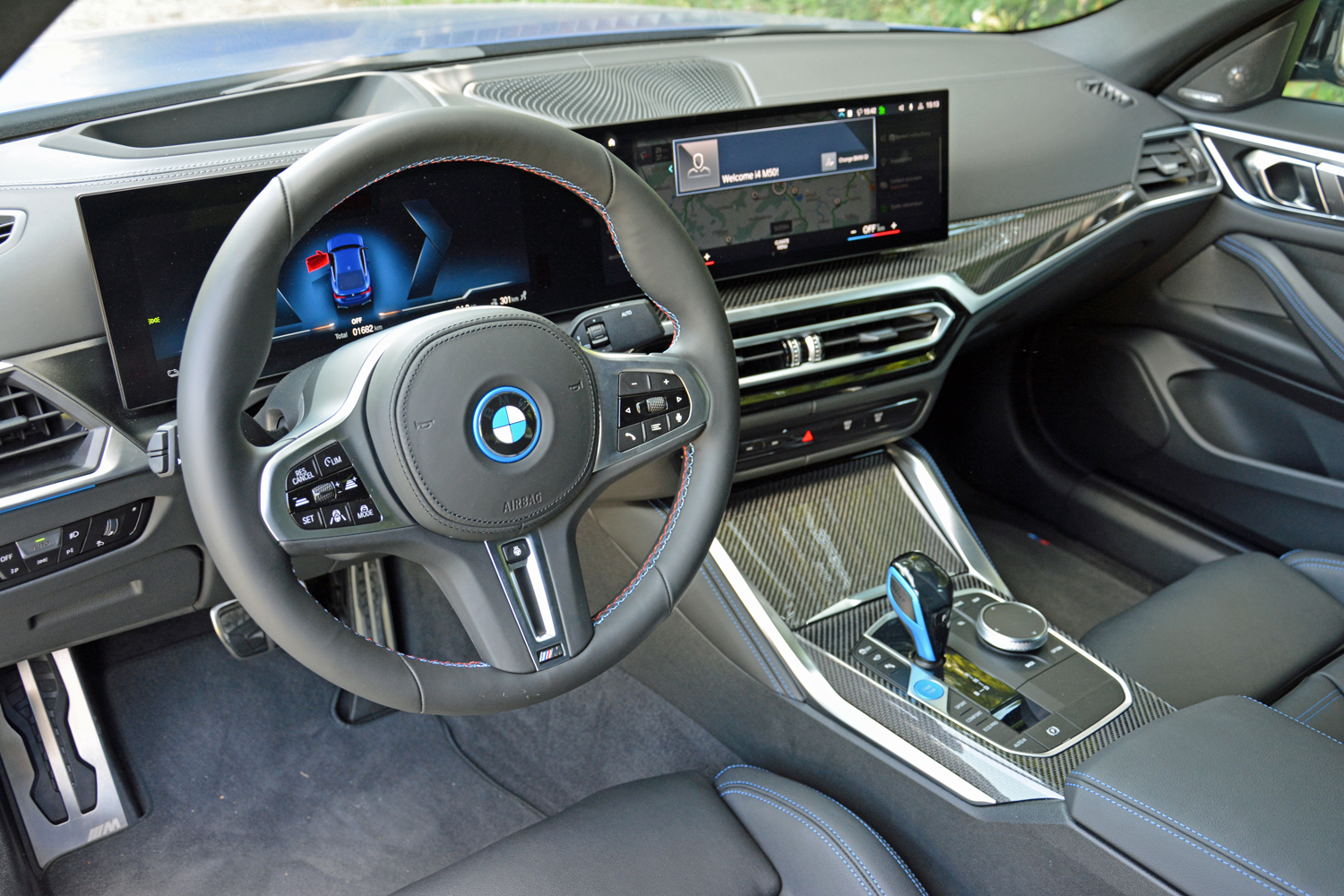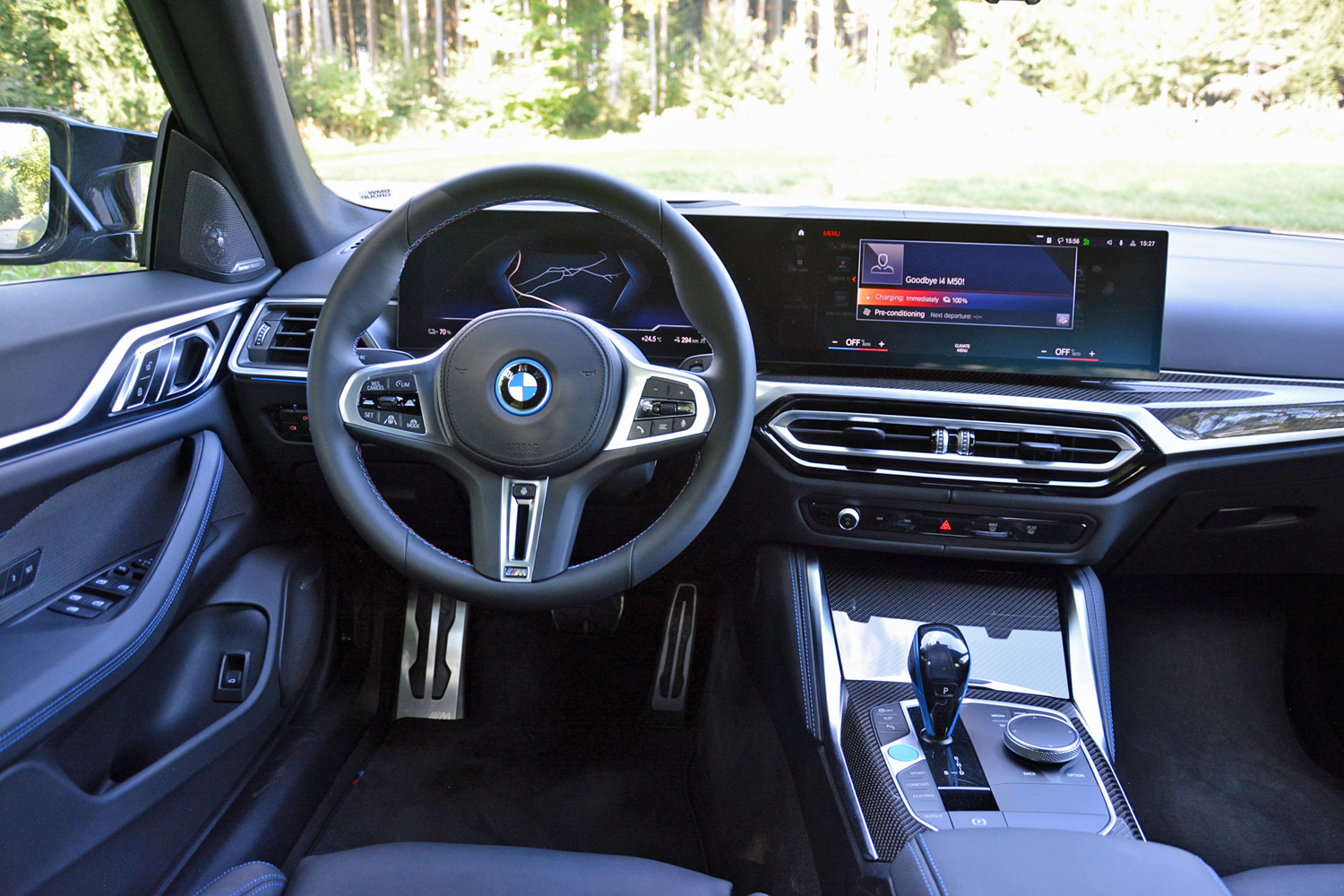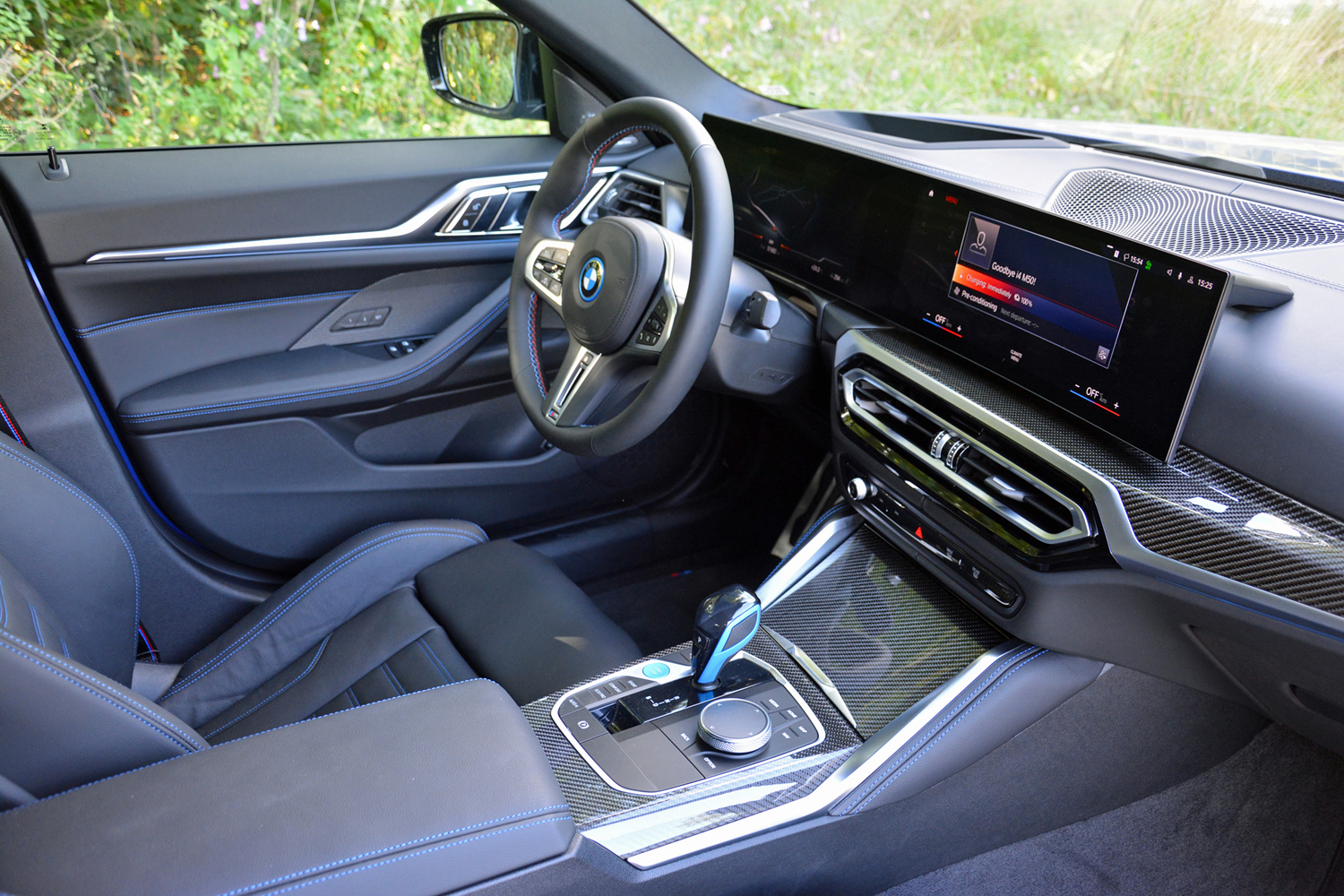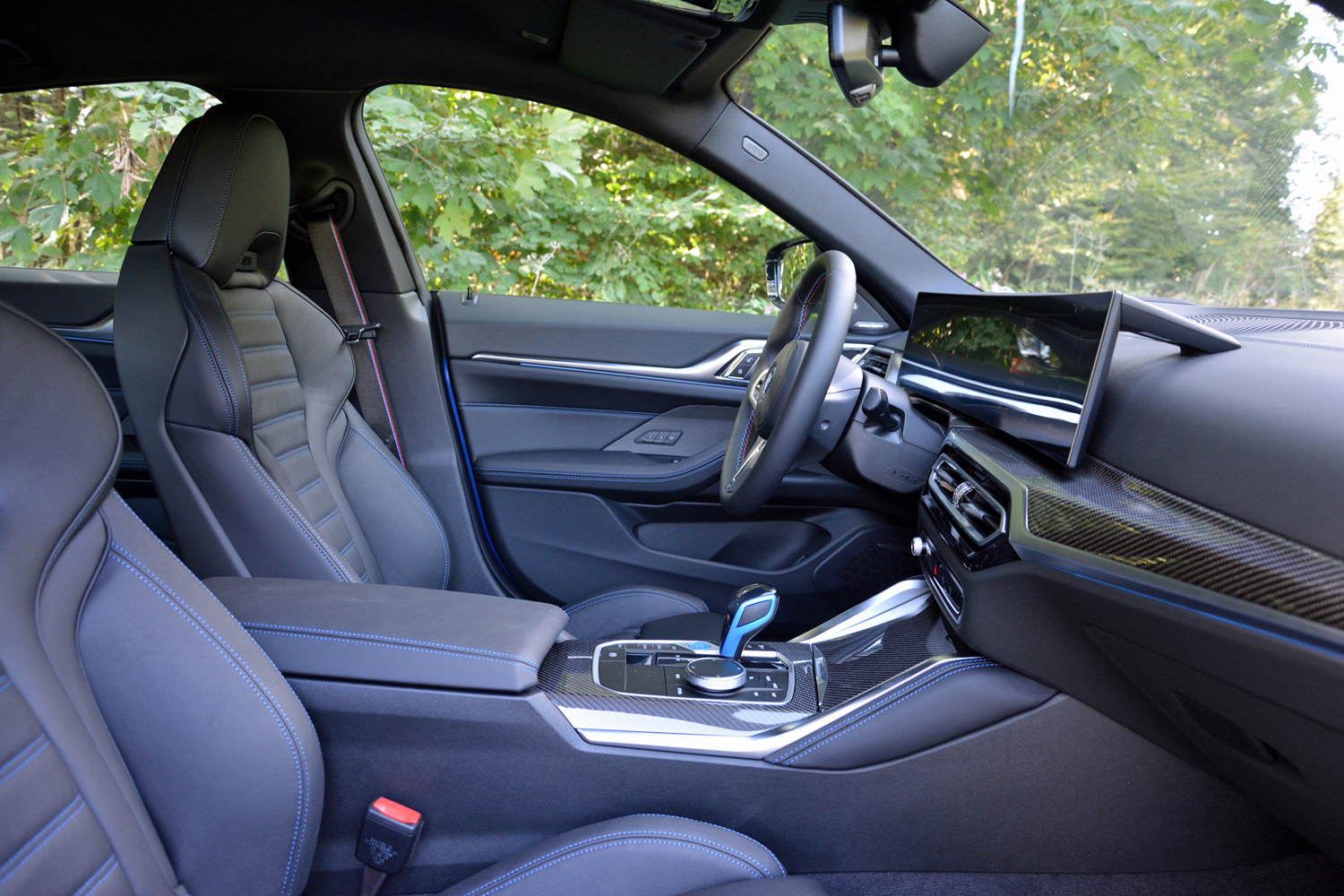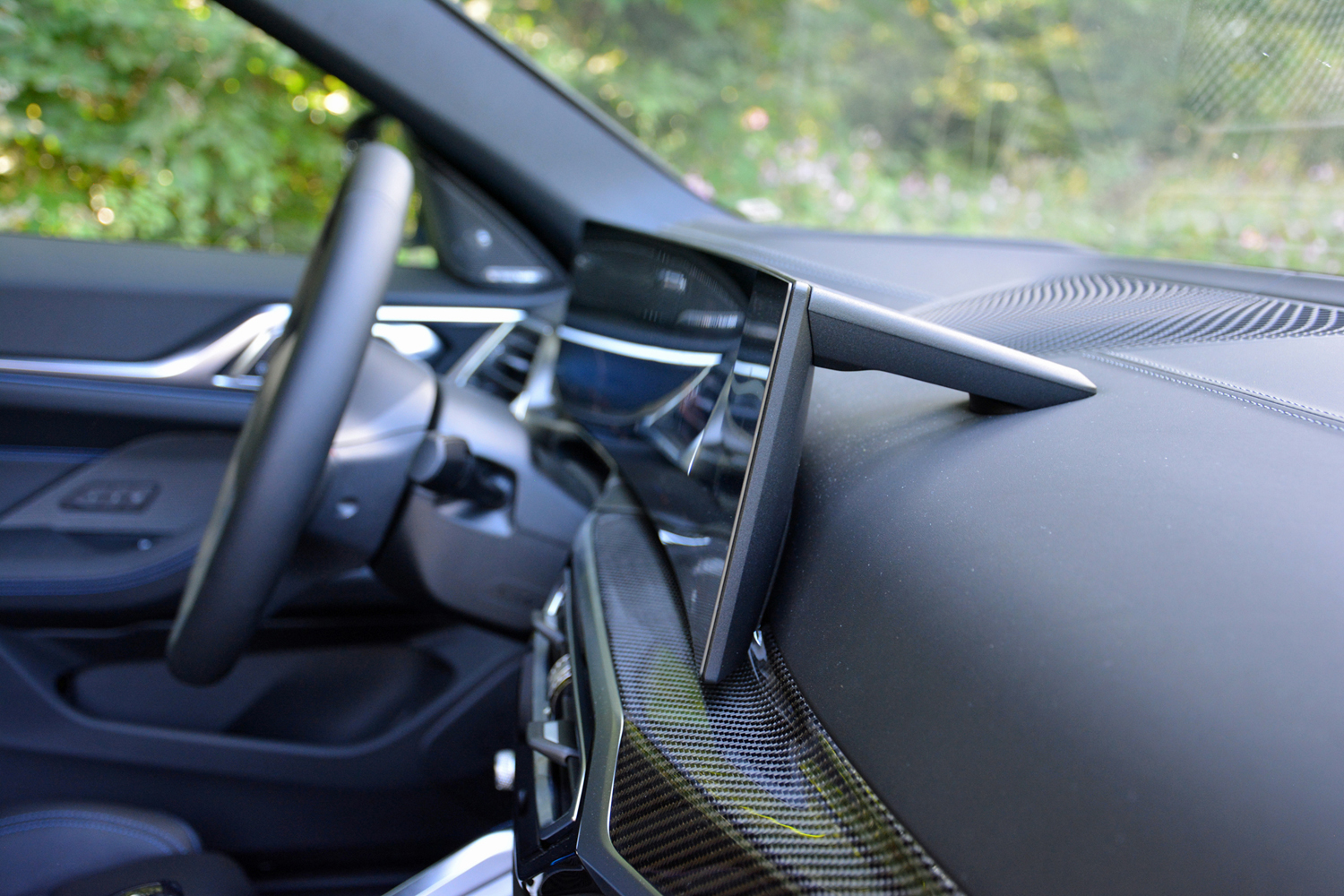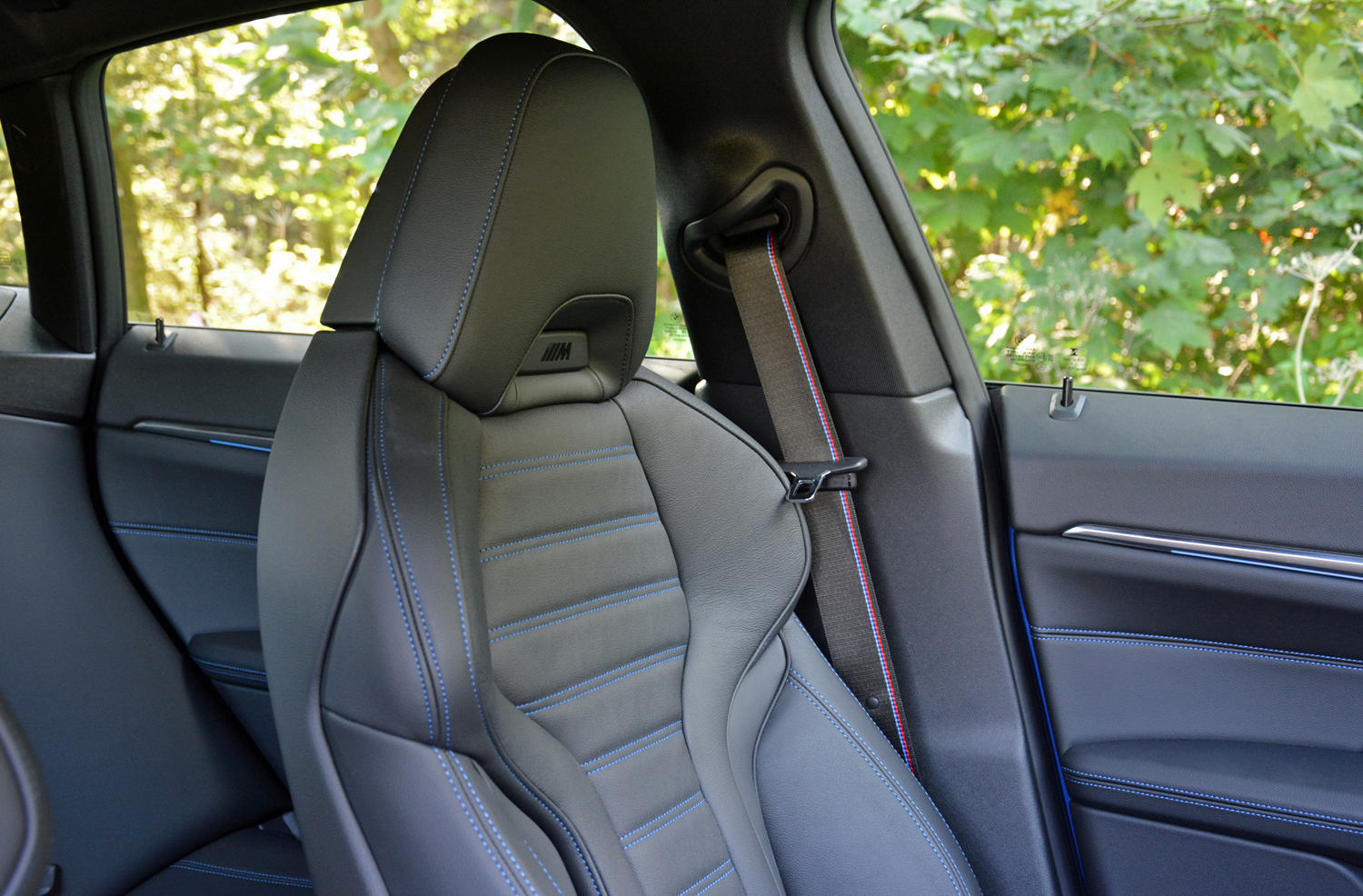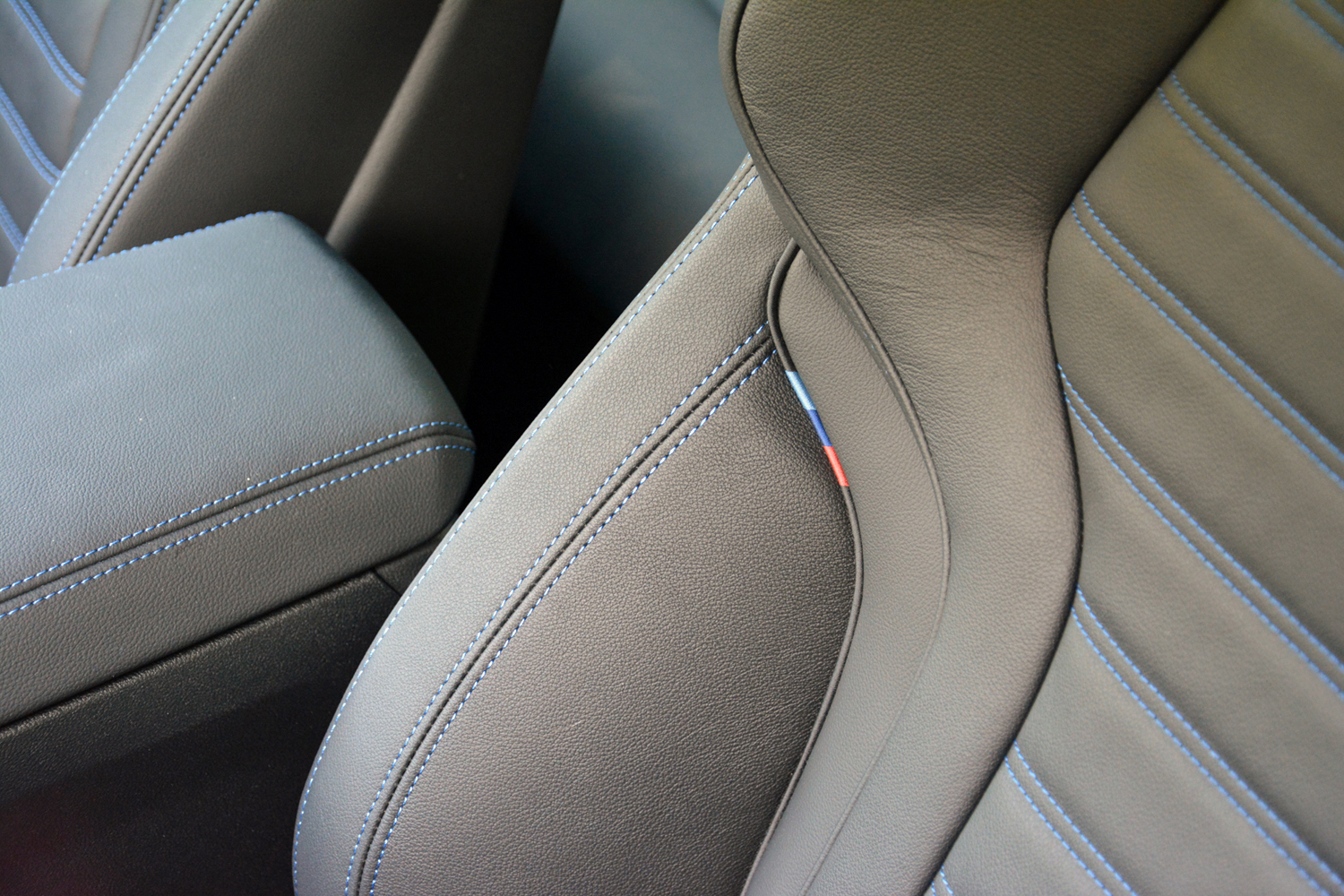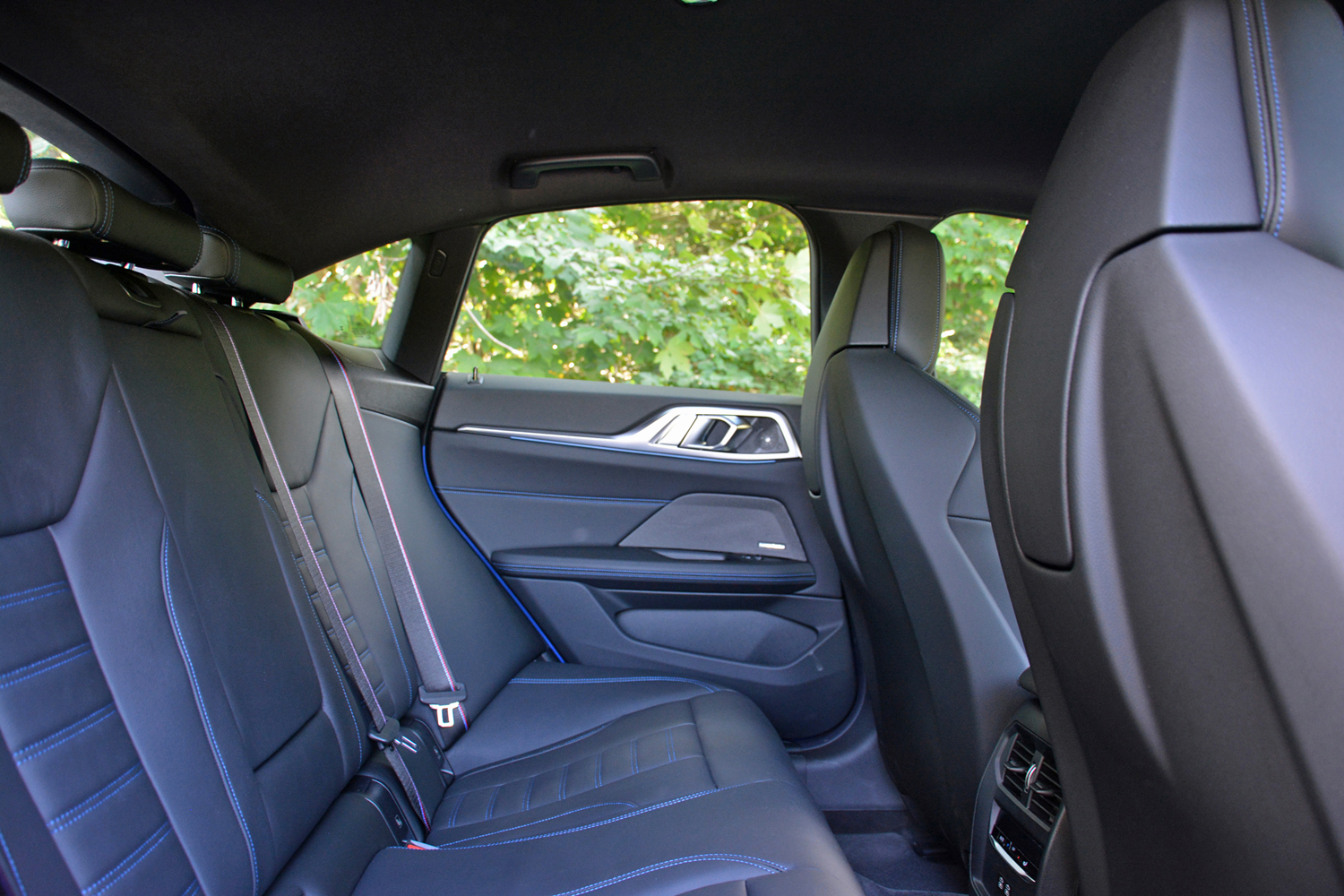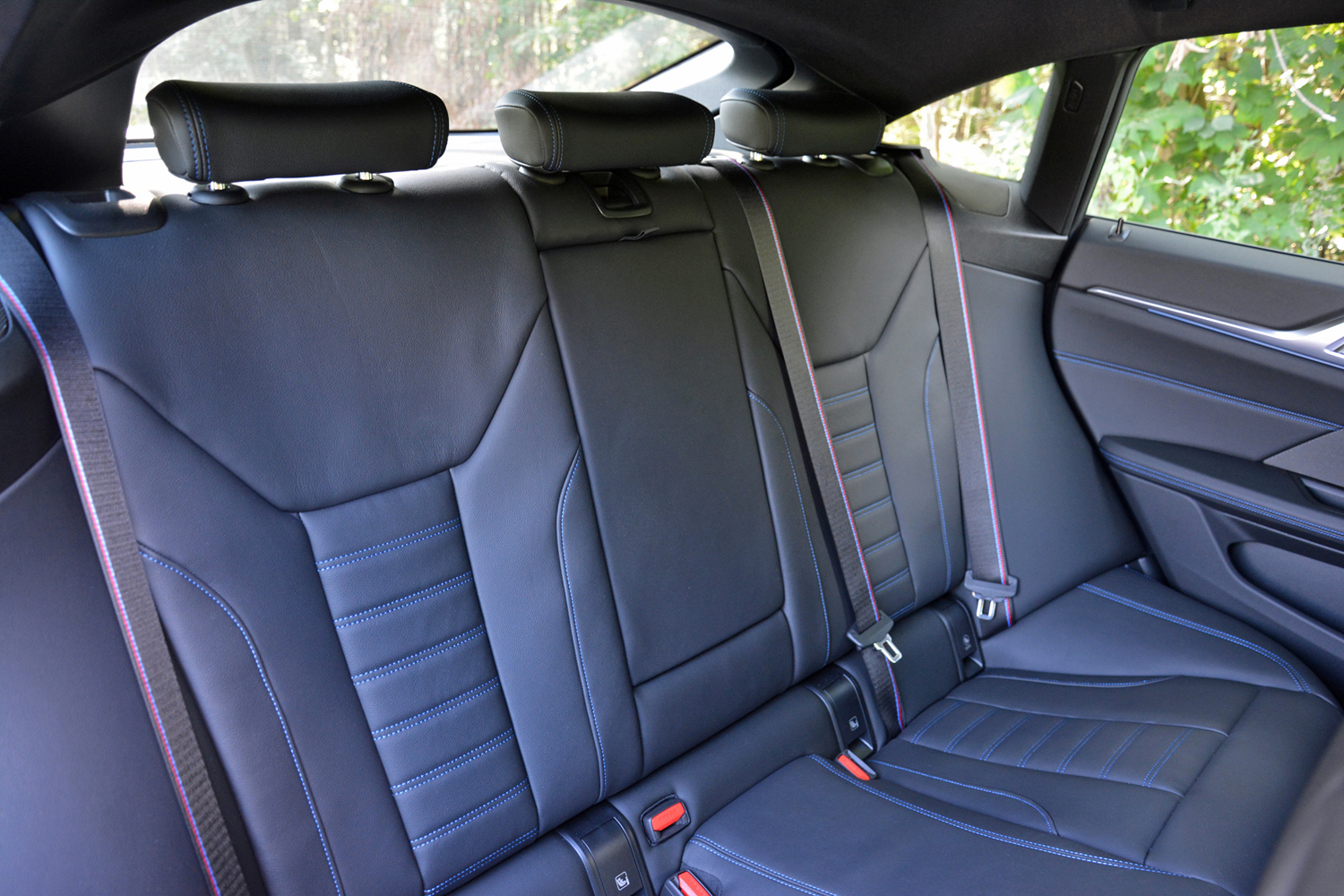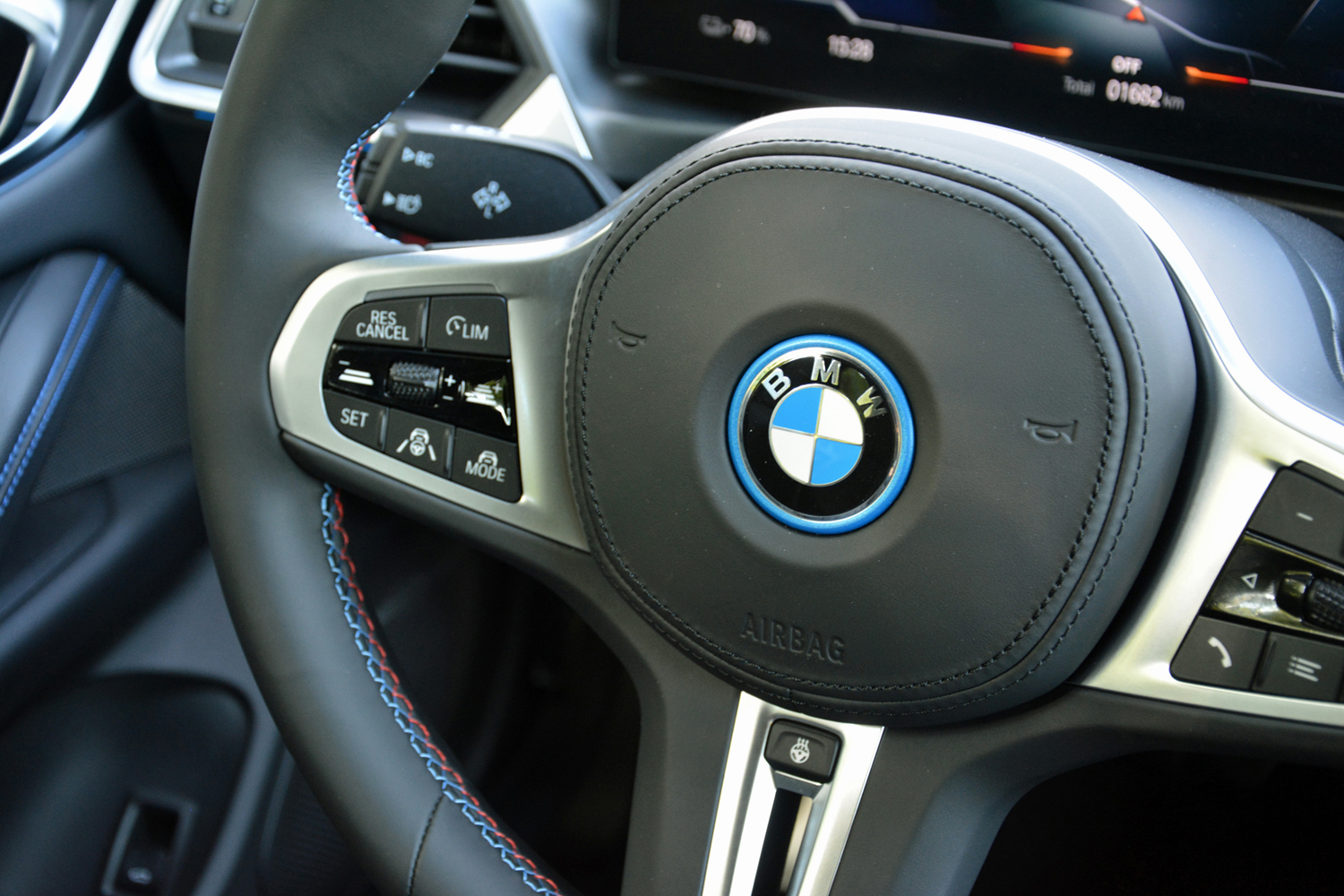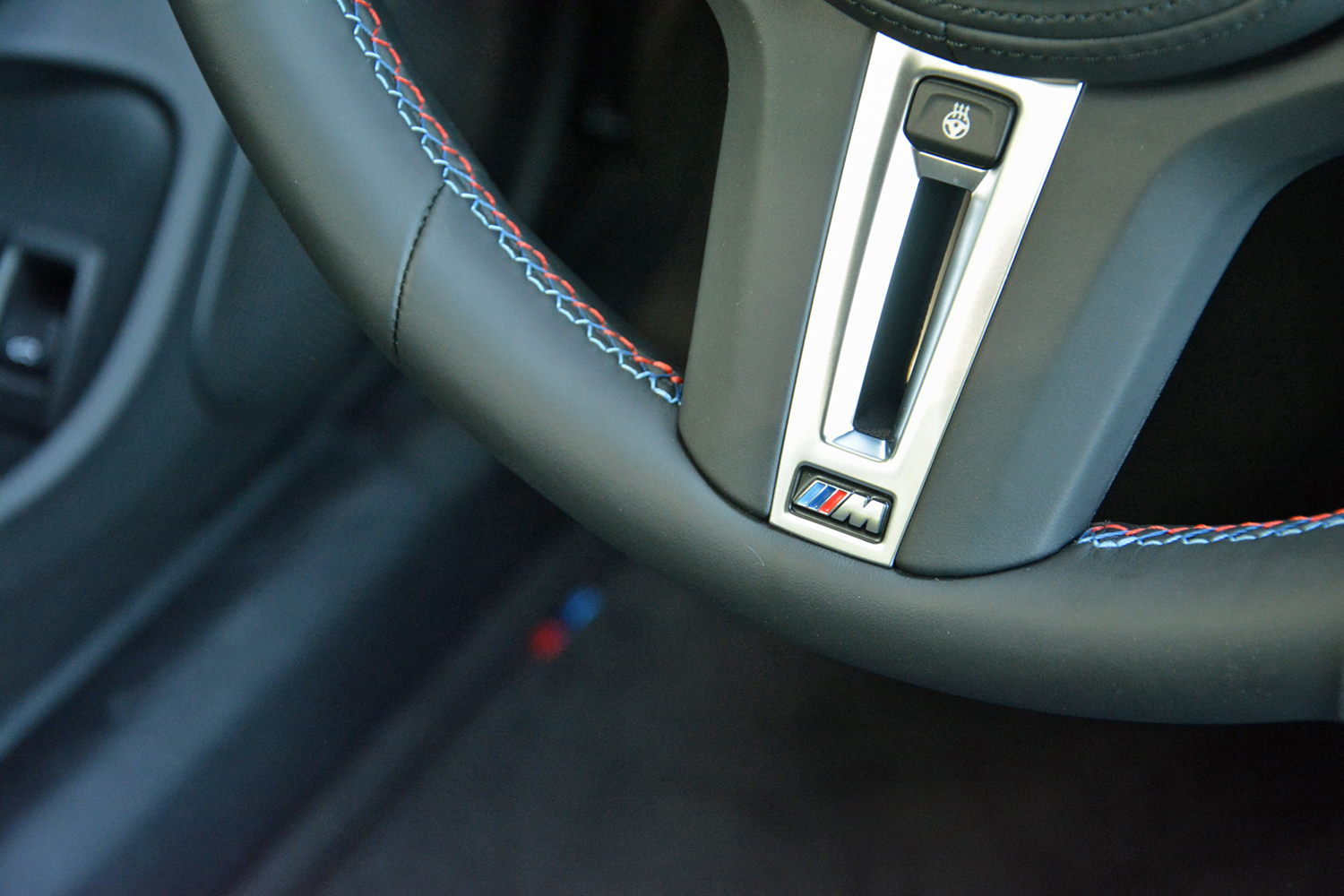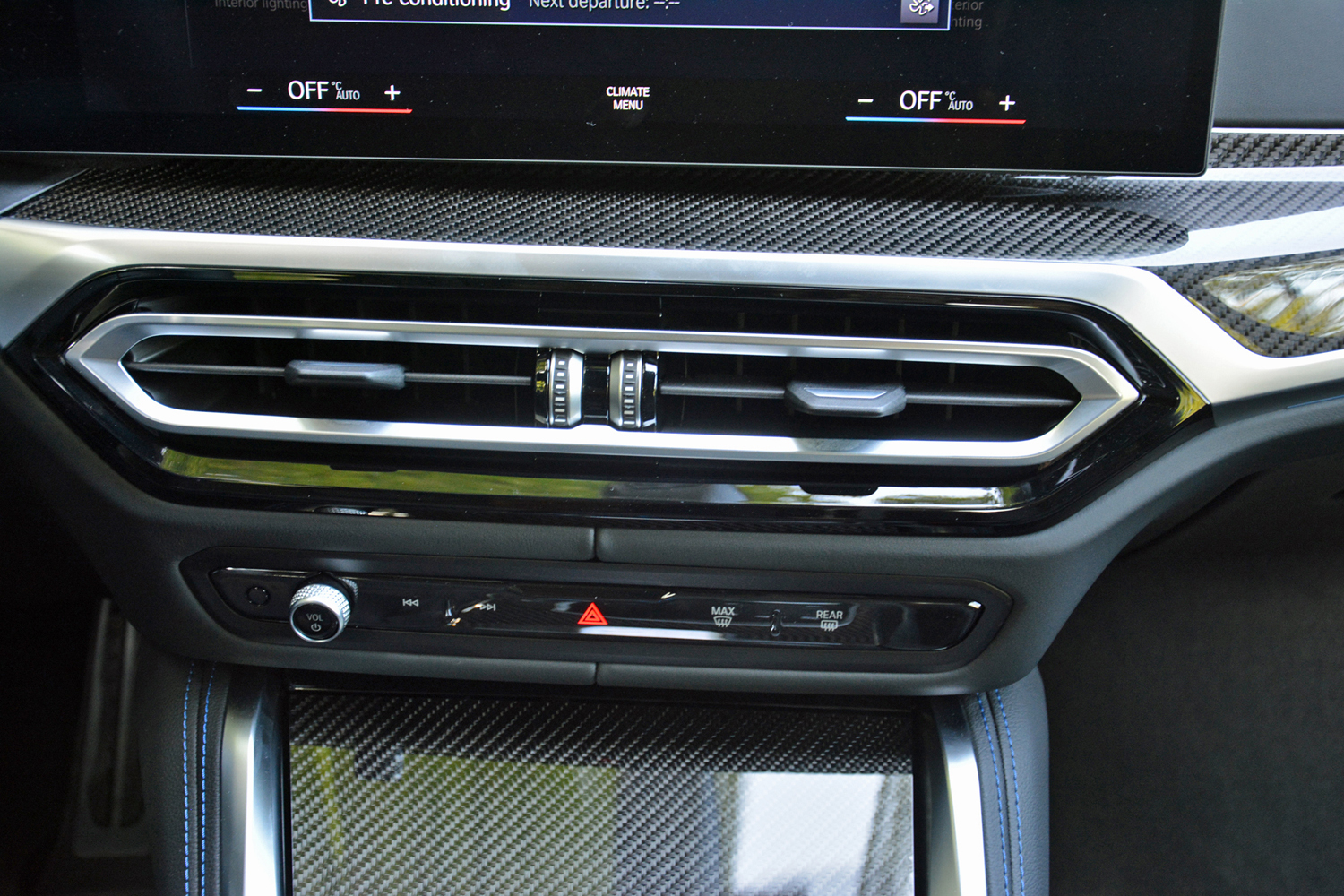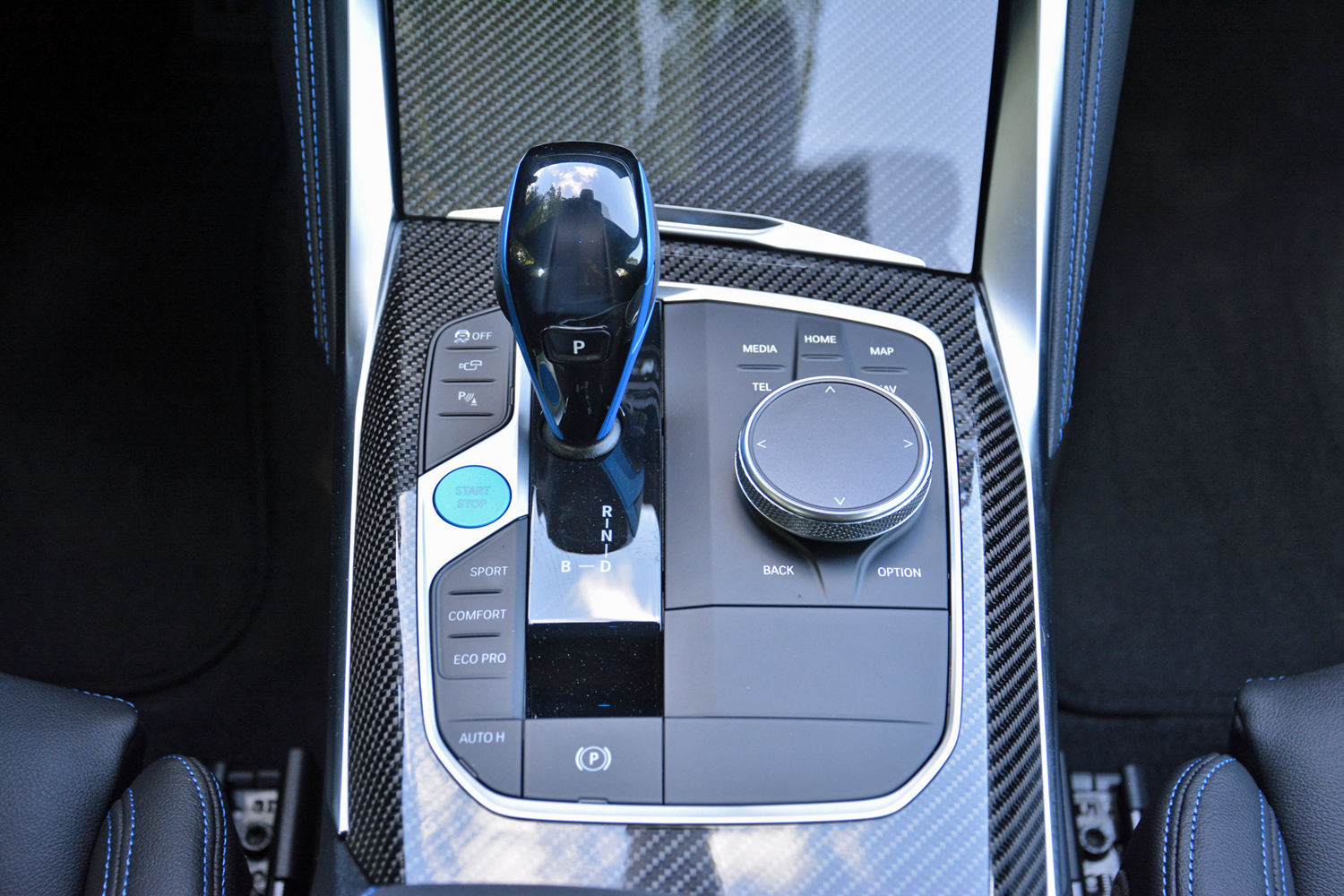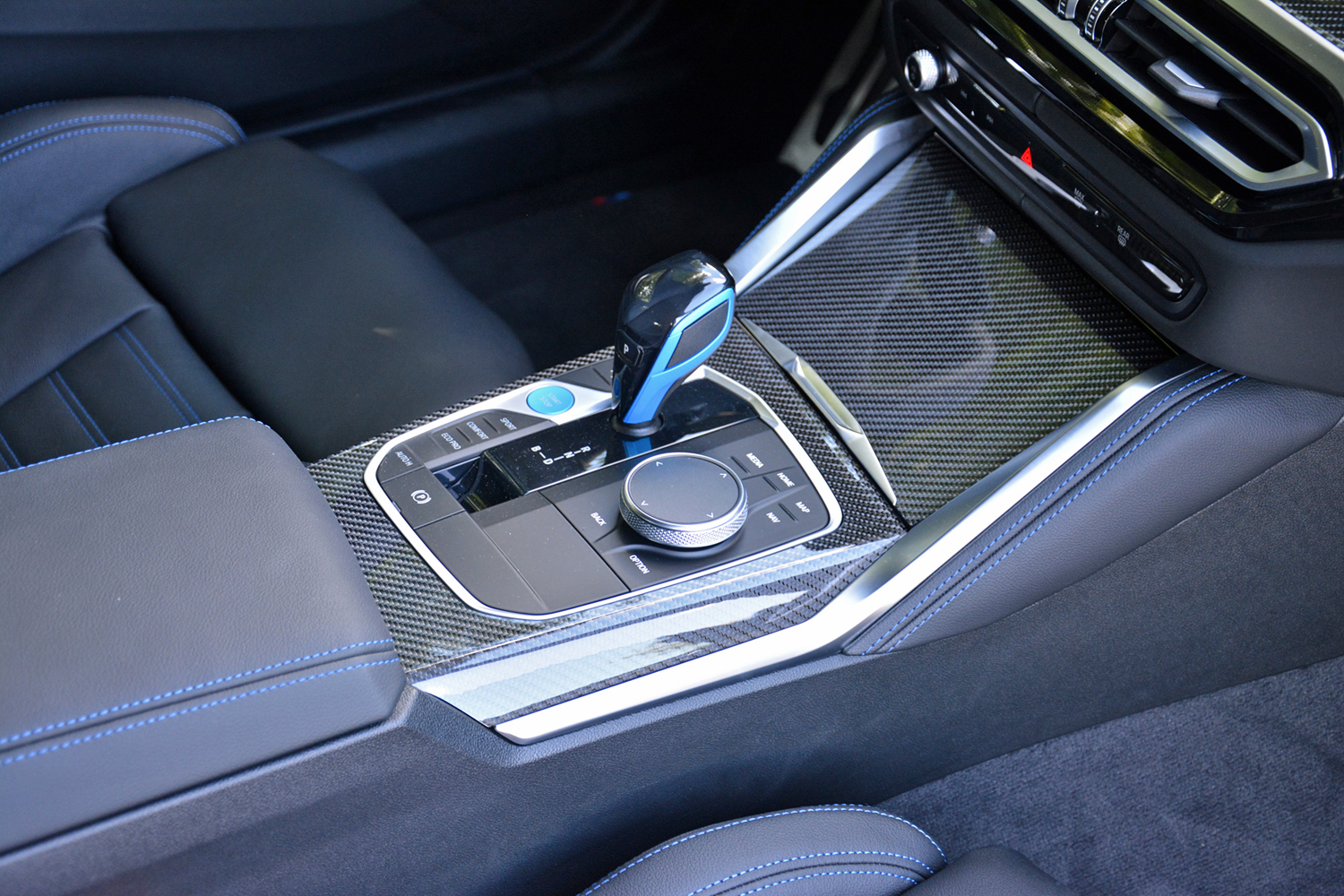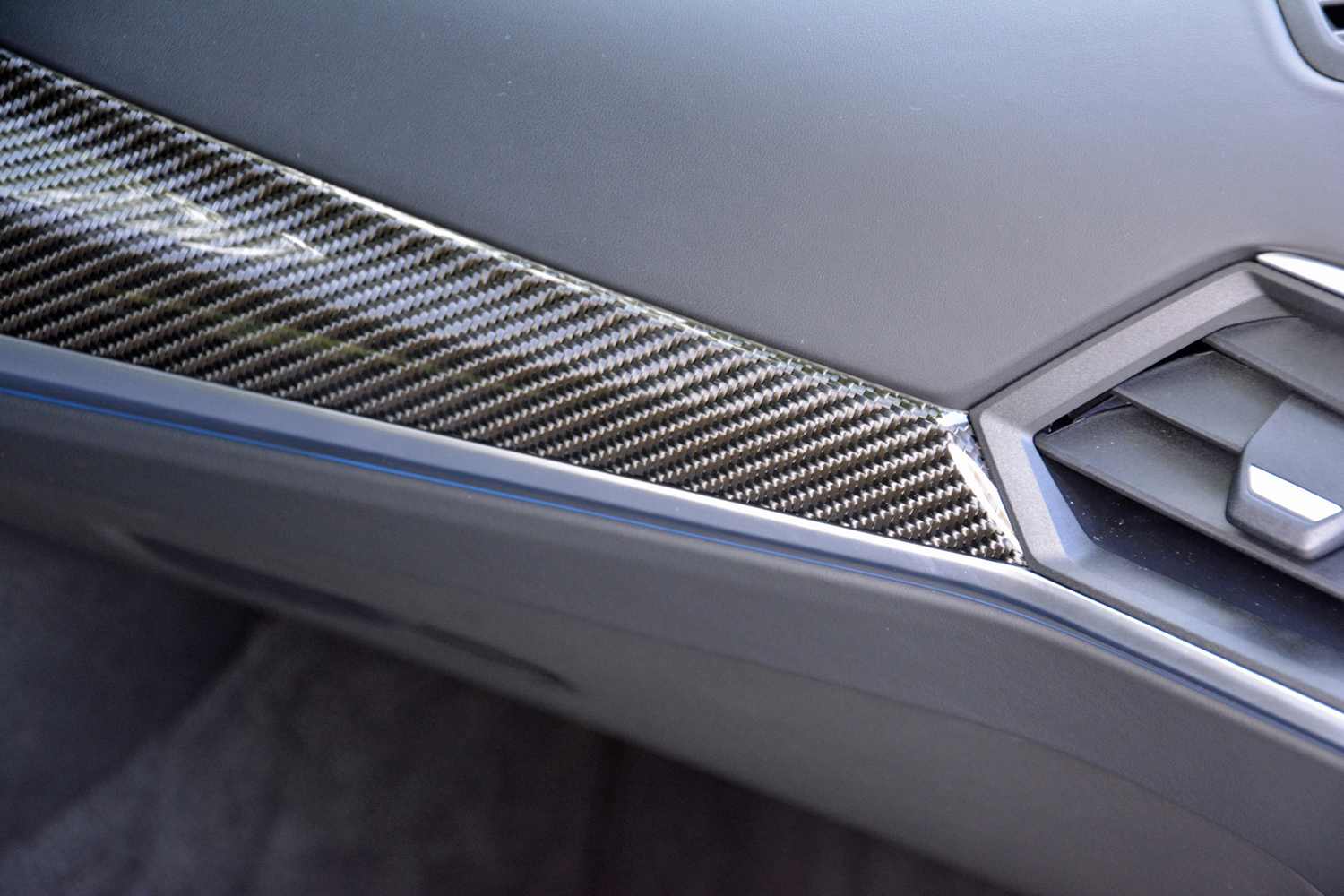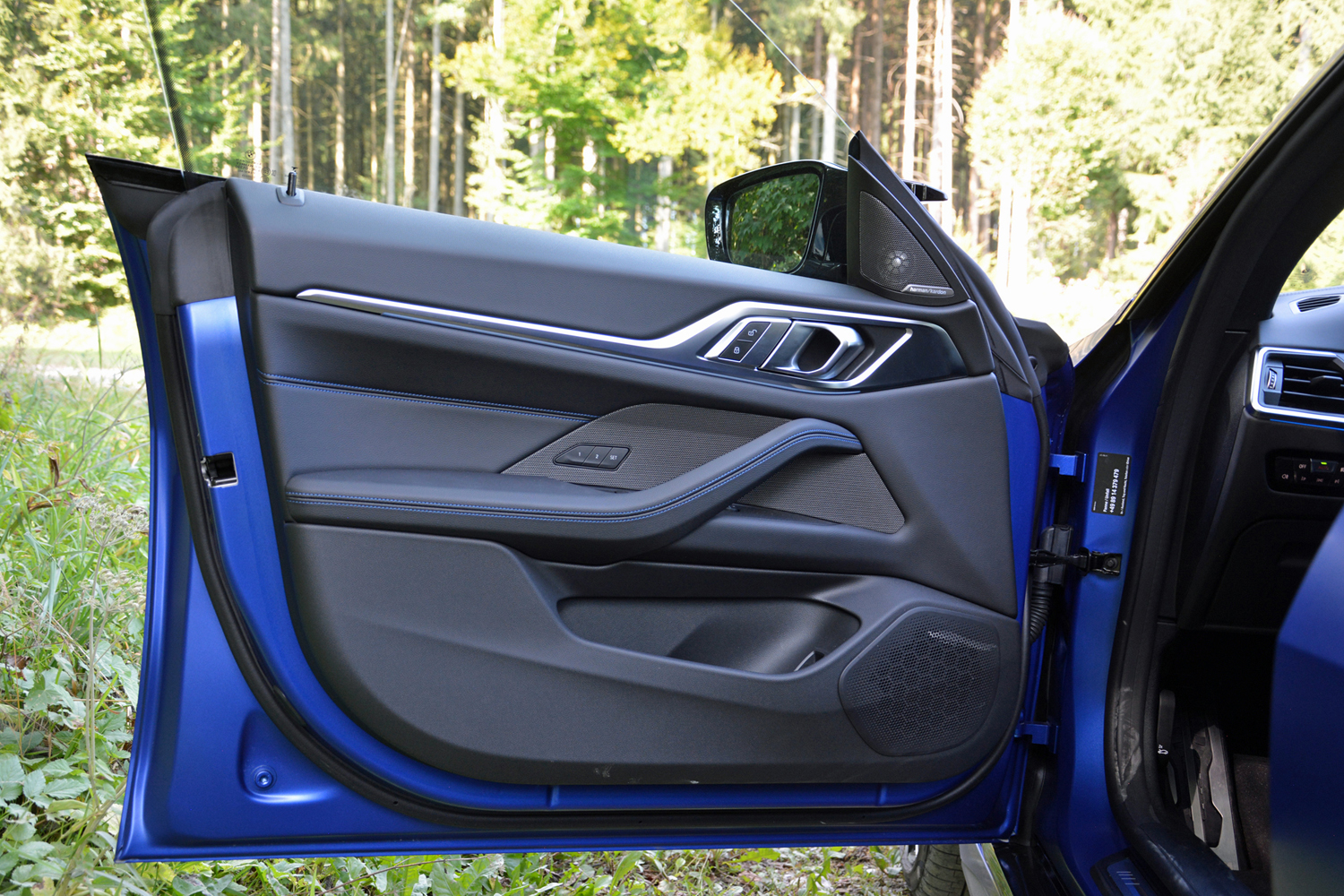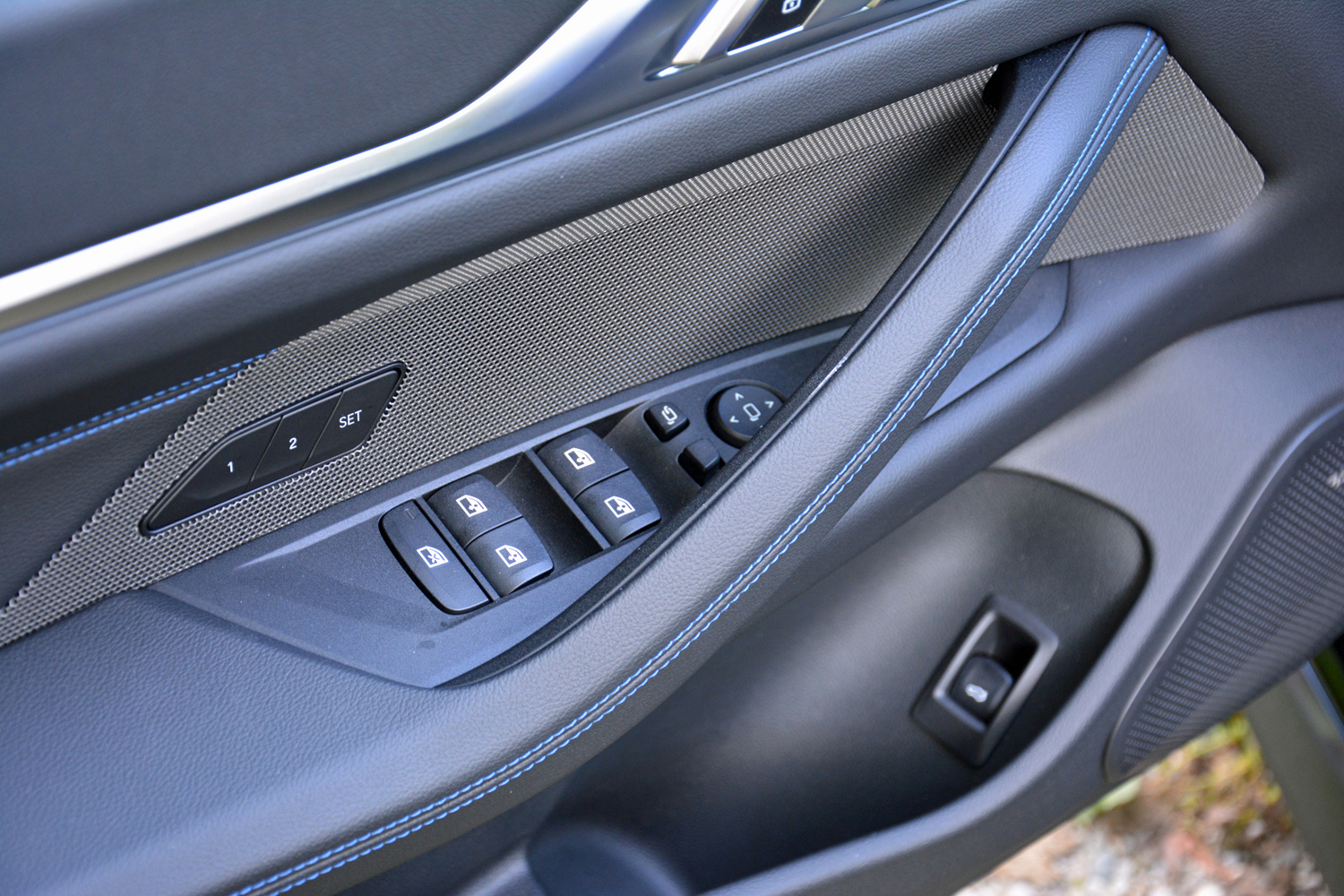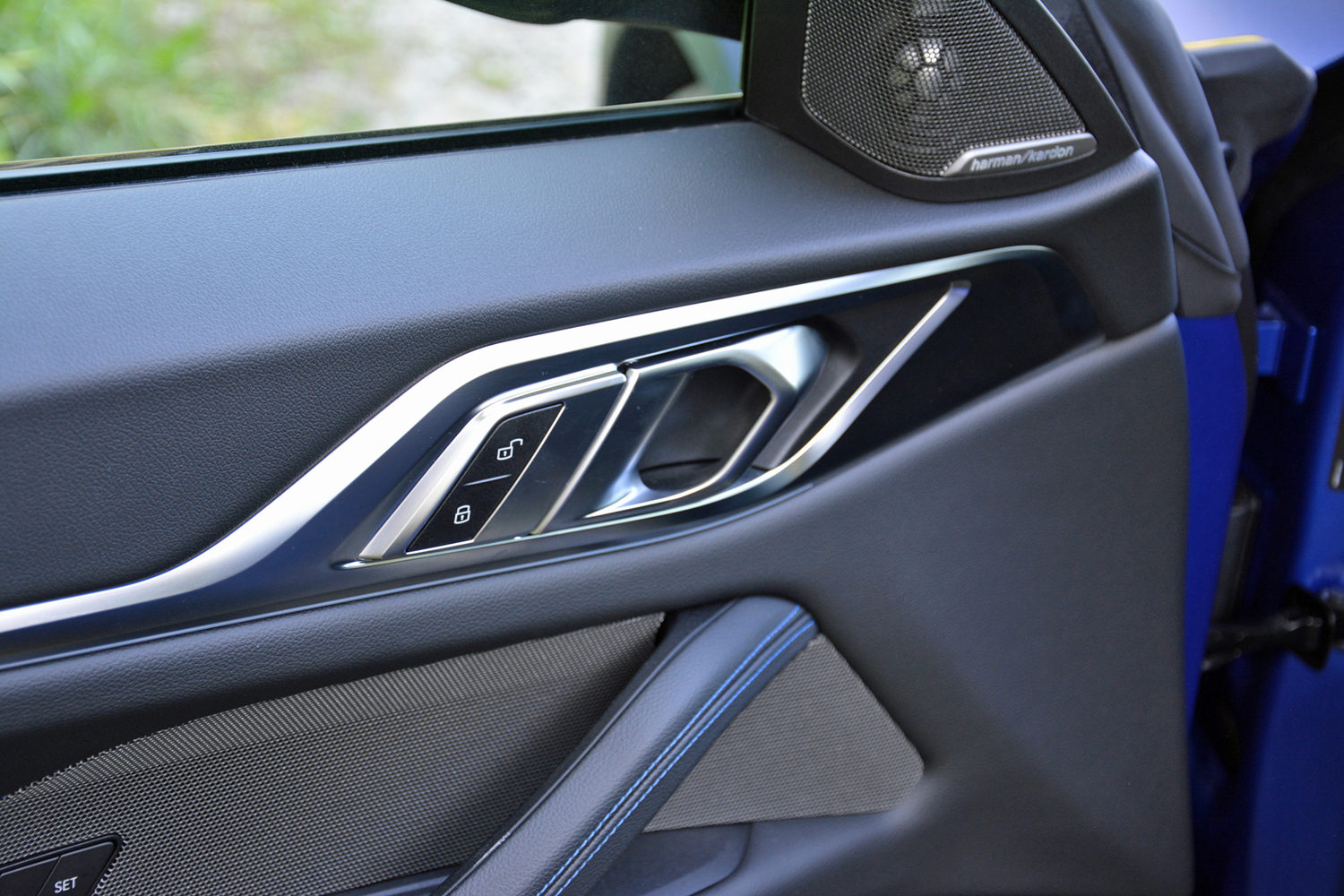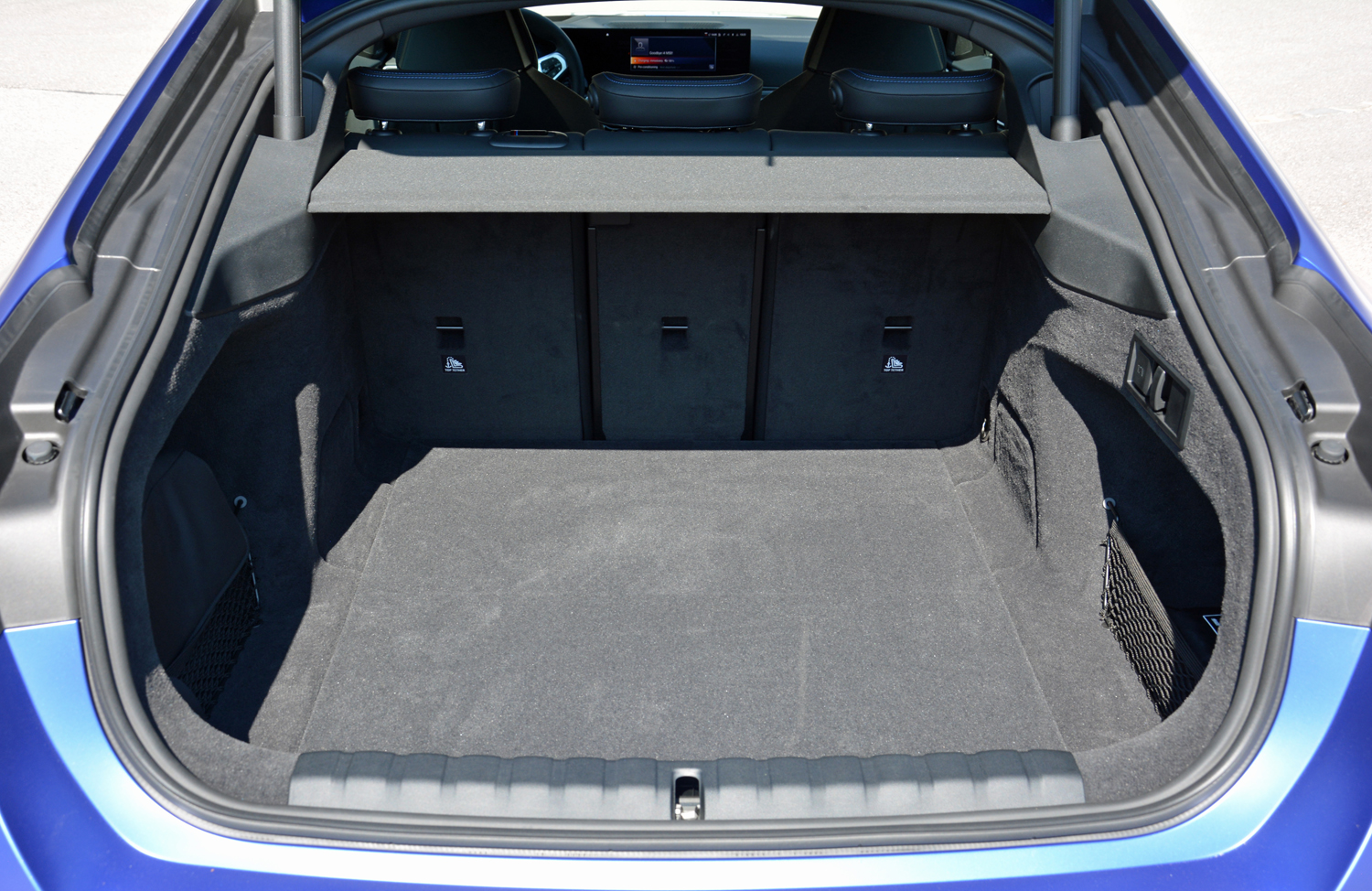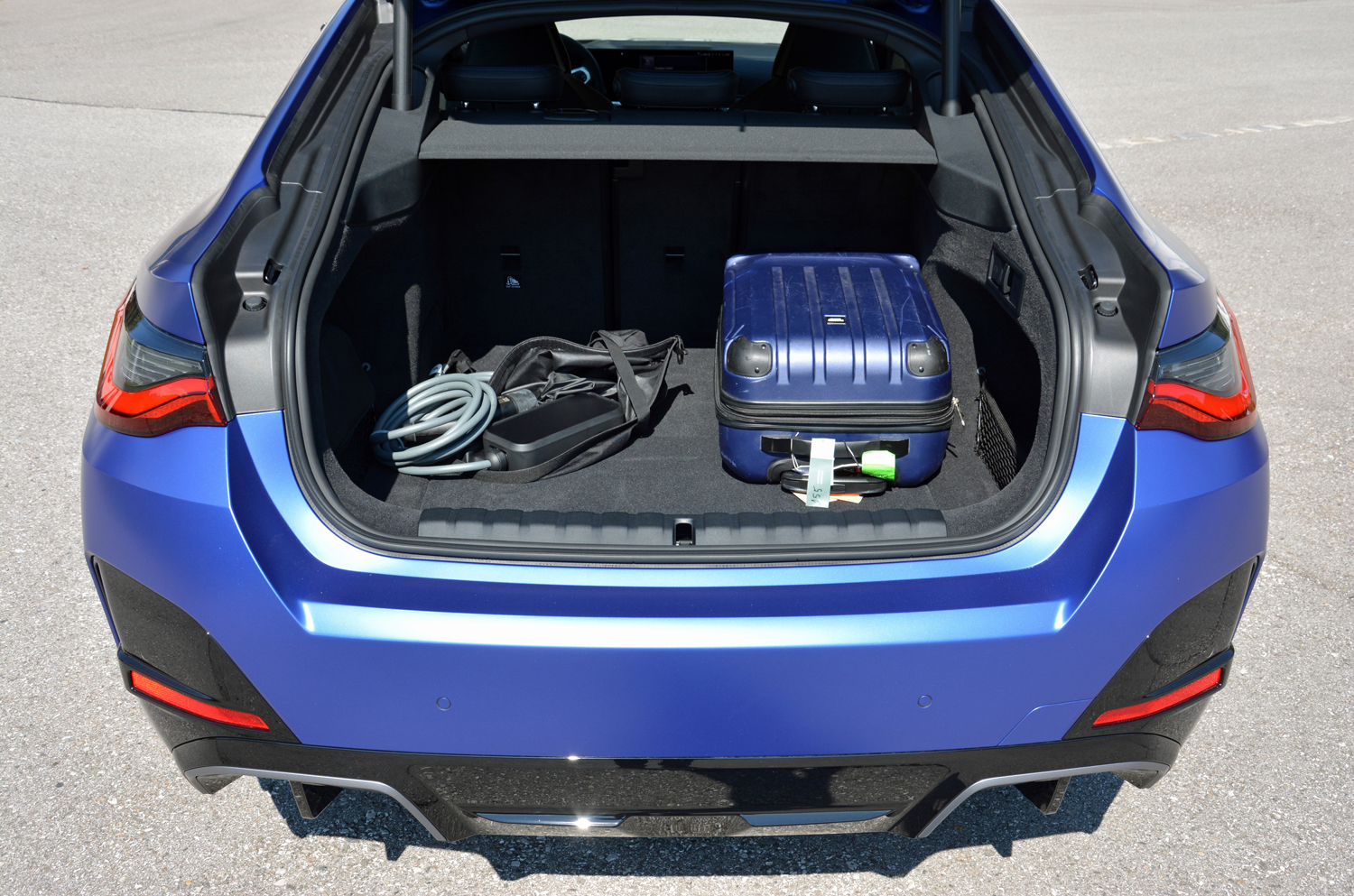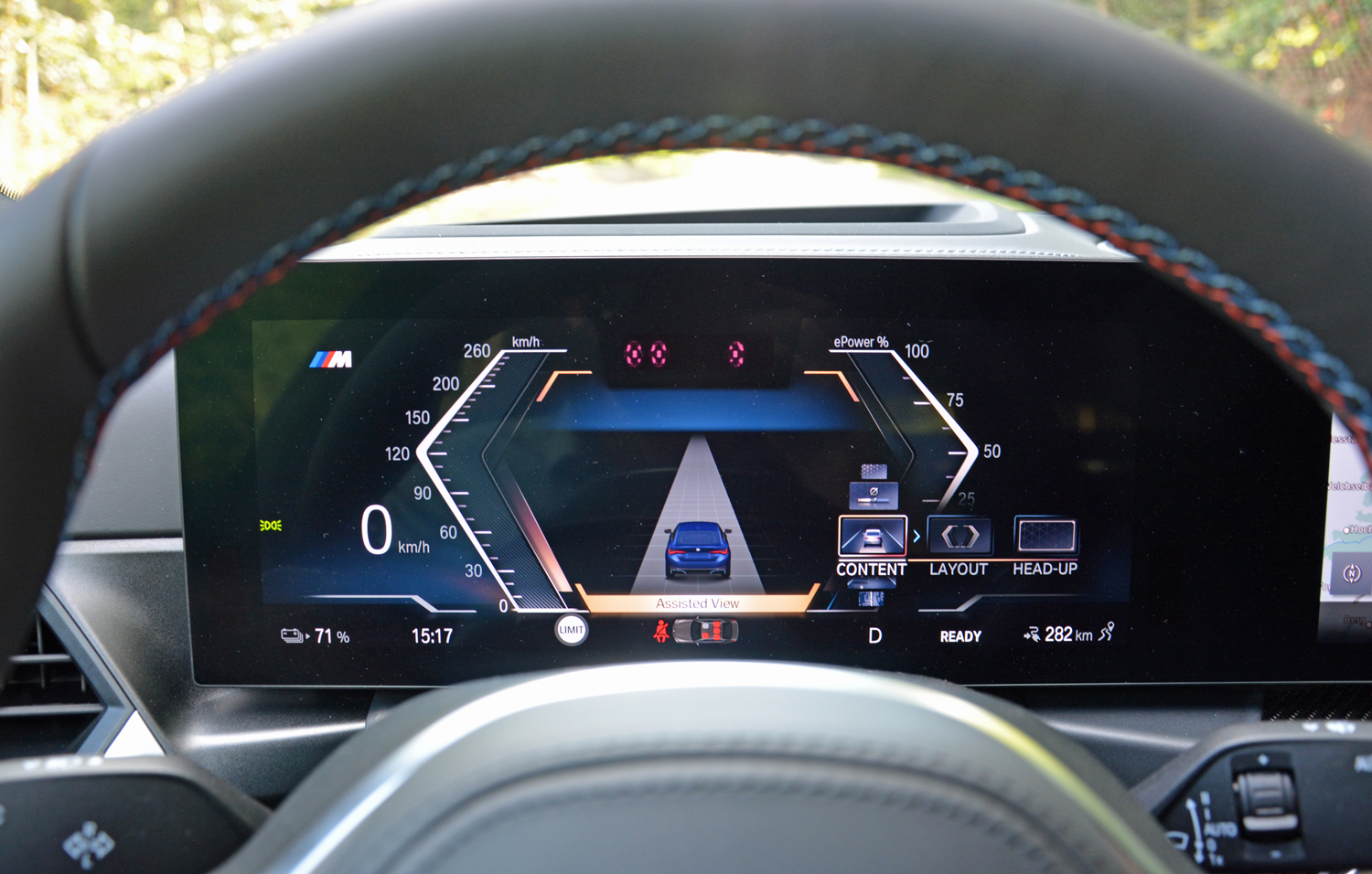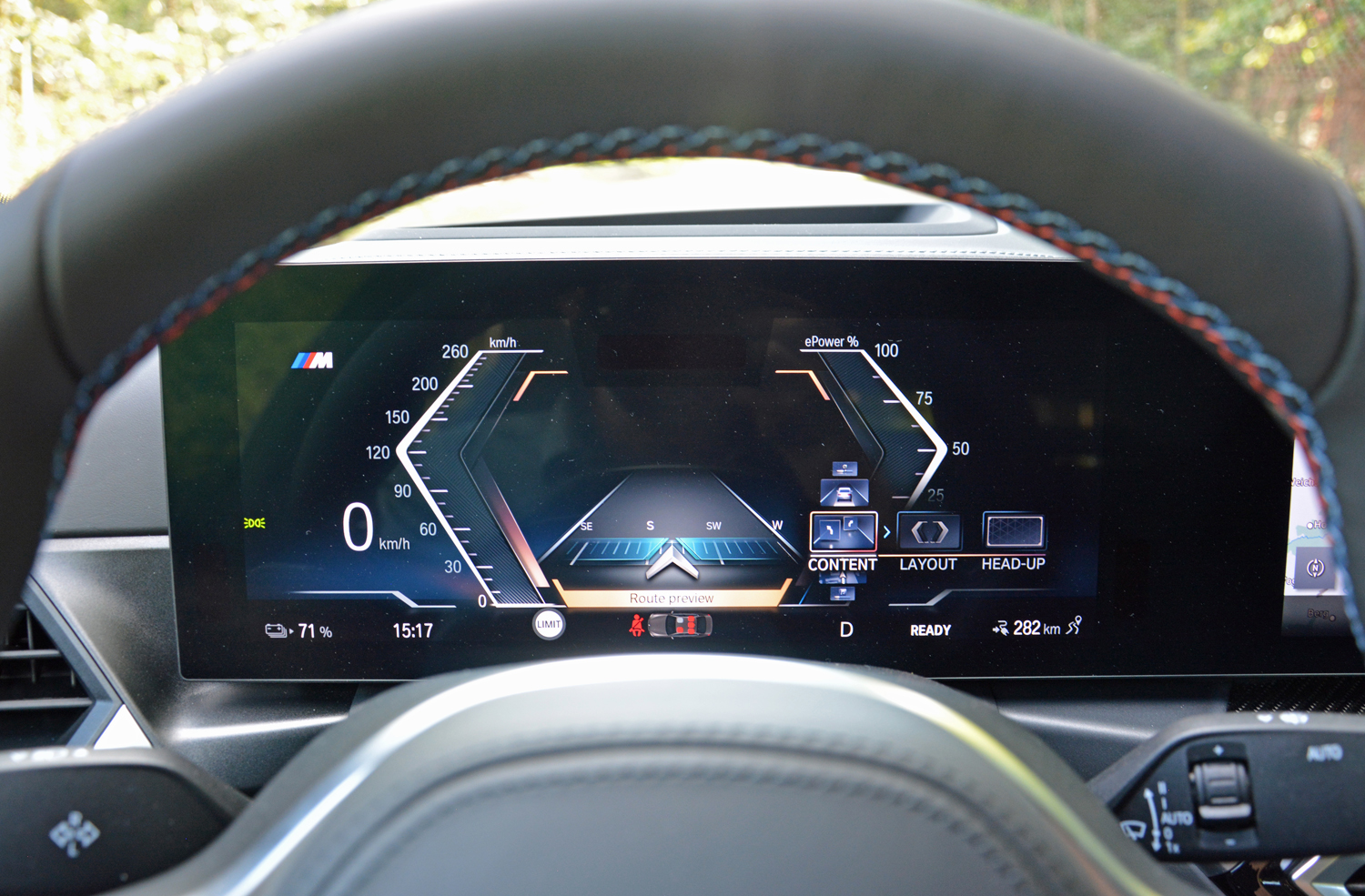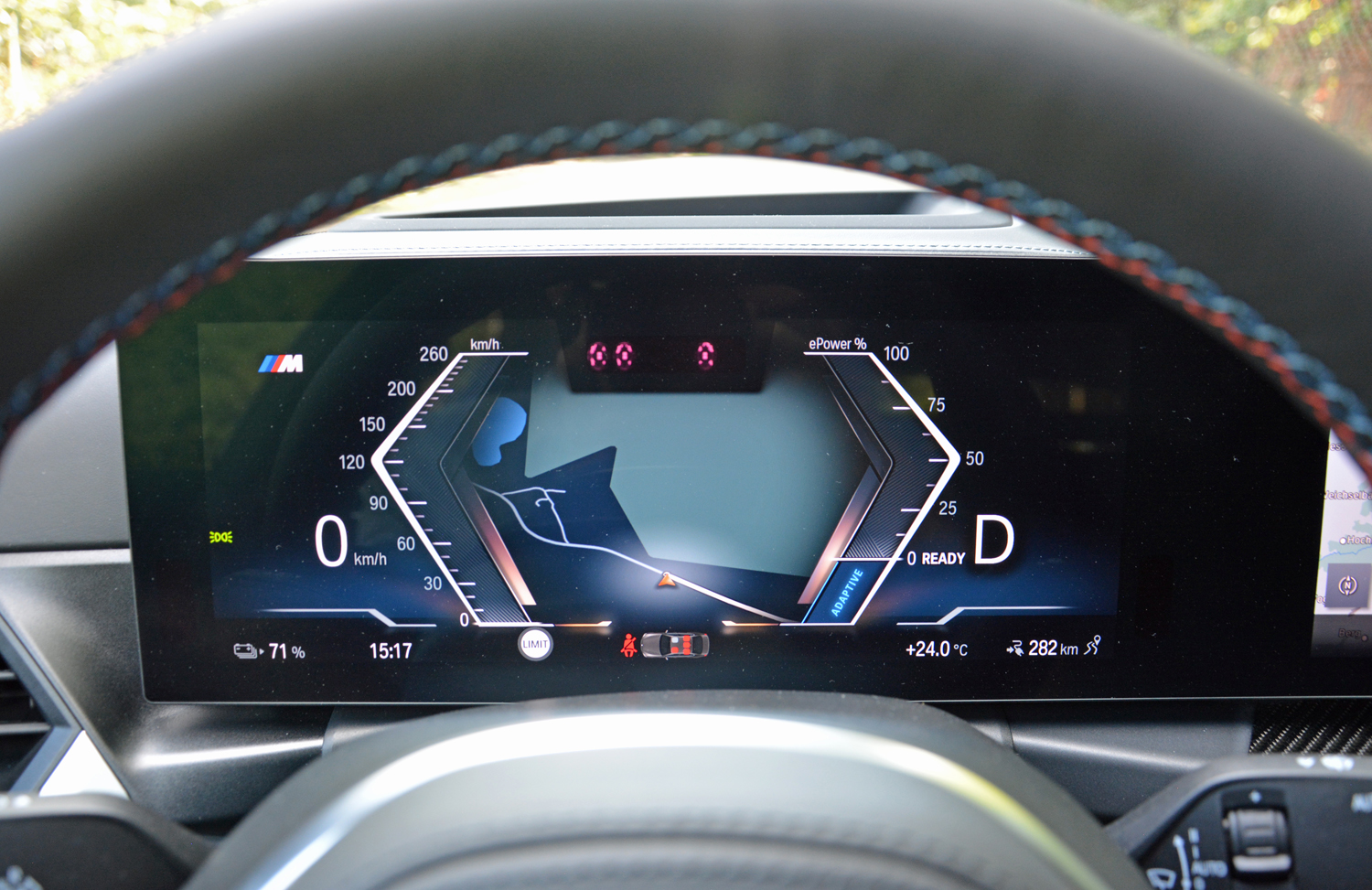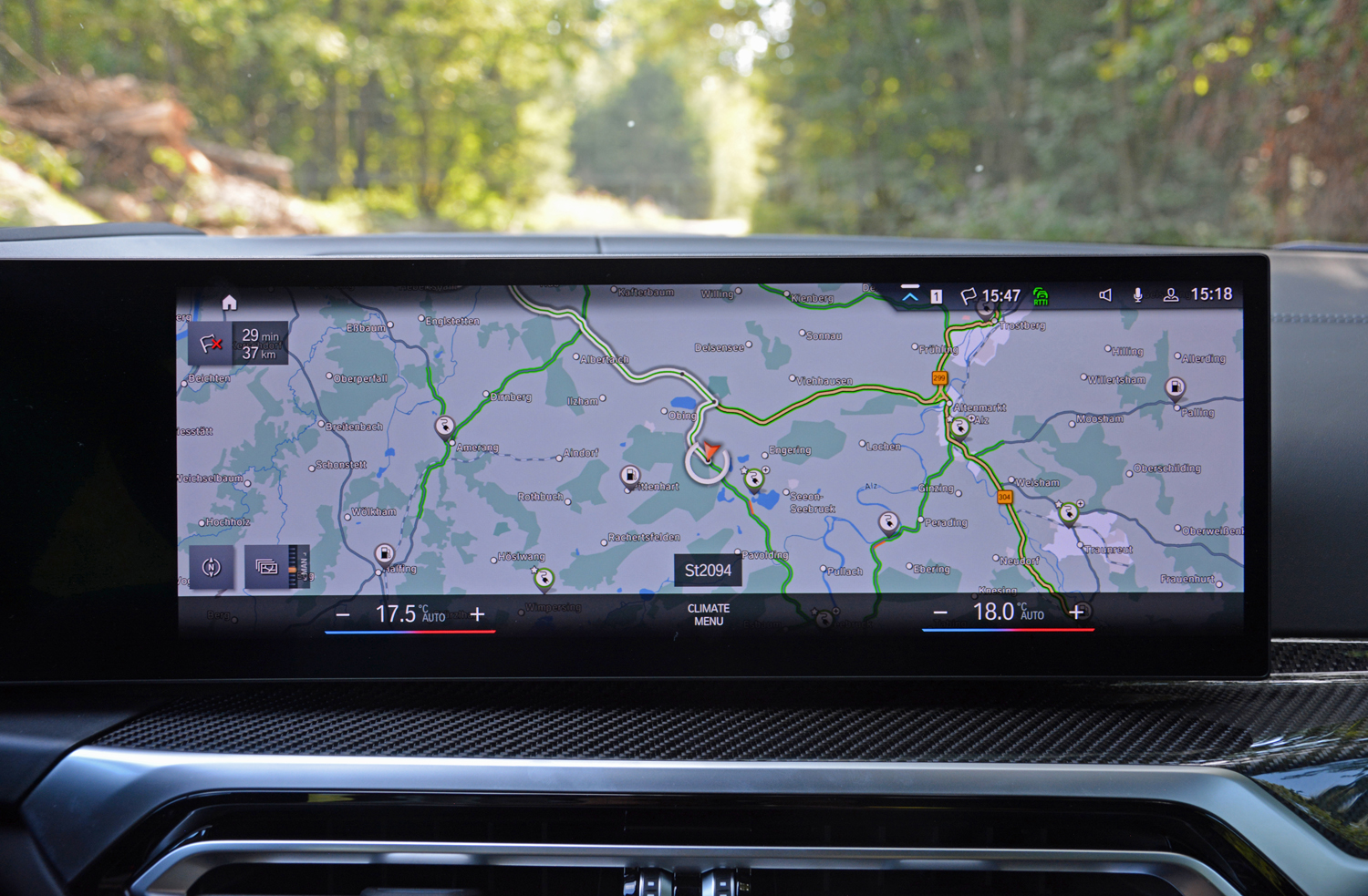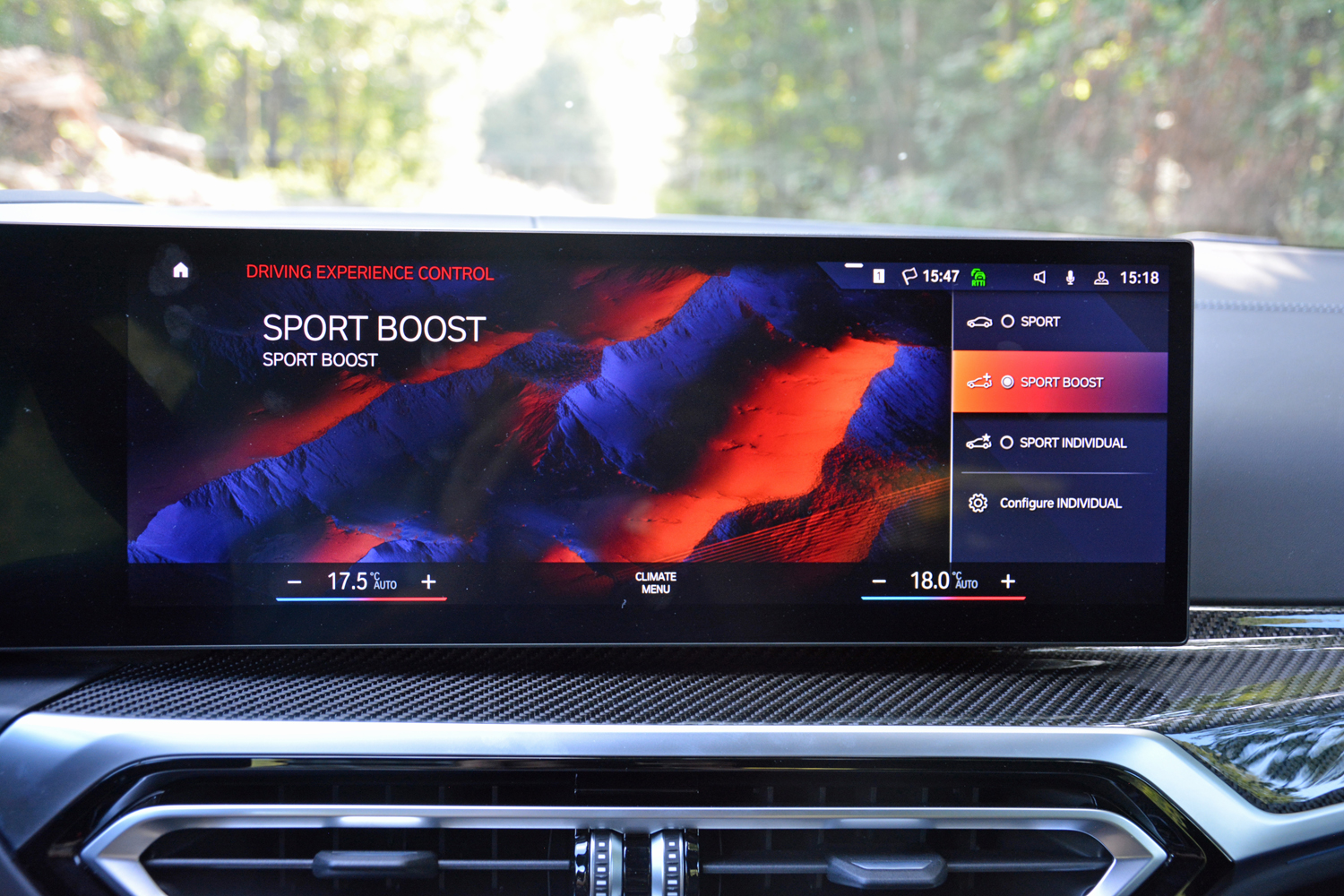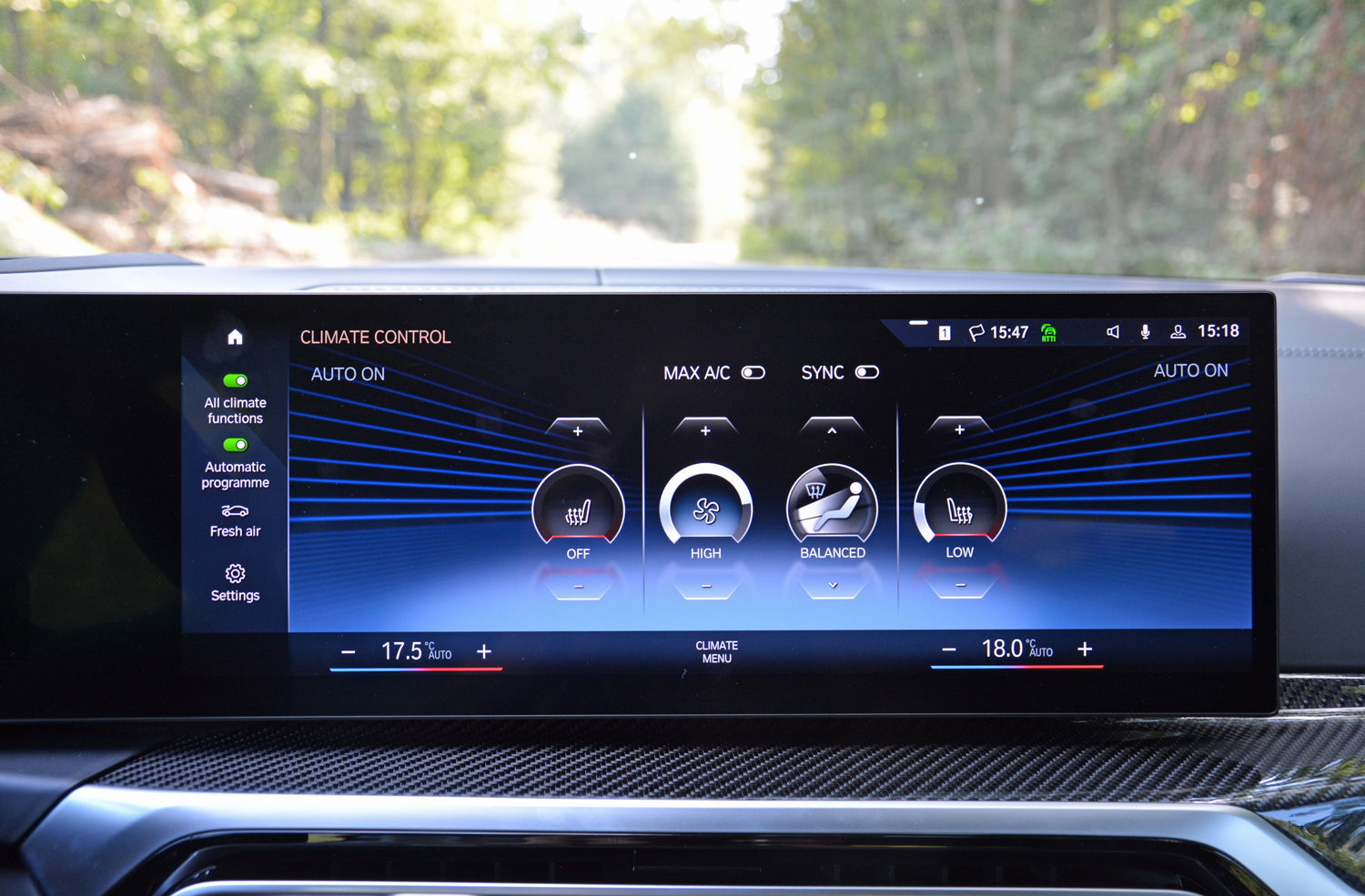We’ve heard a lot about BMW M’s long-awaited electric sedan in recent years. We analyzed the hurdles that engineers had to clear to make the model a reality, notably weight, and we outlined the benefits that come with a performance-tuned electric powertrain, like instant torque. Years in the making, the end result is finally here. It’s called i4, and it’s a hugely significant car that electrifies the very essence of BMW.
Was it worth waiting for? I headed to its home turf to check it out.
Familiar, but different
BMW made its intentions crystal-clear when it introduced the Concept i4 in early 2020. While some of the finer design details were tweaked, what we saw last year is essentially what we’ll get when the i4 begins rolling into showrooms across the nation as a 2022 model. It wears a front end that falls in line with the rest of the BMW range, a relatively long hood, and a fastback-like roof line. It measures 188.5 inches long, 72.9 inches wide, and 57 inches tall, numbers that make it ever so slightly longer and wider than the current-generation 3 Series. Keep browsing through the BMW catalog and you’ll find the 4 Series Gran Coupe, which is even closer to the i4 in terms of design and packaging.
Although the iX (the second electric car BMW will release for 2022) features an unusually futuristic interior, the i4 looks and feels like more of a conventional sedan when you’re sitting behind the wheel — and that was intentional. The goal was to take what enthusiasts love about BMWs and make it electric, not to leverage electrification as a way to open new doors in the packaging department. As a result, the cabin’s layout is reminiscent of what you’d find in a 3 Series, from the dashboard to the center console, and BMW installed a pair of sport seats for the front passengers. Technology is one exception: the i4 is available with the curved, high-resolution display that also appears in the iX.
Rebooting the ultimate driving machine
BMW M is nearly a deity in the car world; engineers couldn’t afford a swing and a miss. While this is the first i4, meaning it has no direct predecessor, it has decades of heritage to live up to. The first ingredient is power: built on the highly modular CLAR platform, the i4 uses a pair of BMW’s fifth-generation electric motors (one per axle) to put 536 horsepower and 586 pound-feet of torque under the driver’s right foot. The motors draw electricity from an 83.9-kilowatt-hour lithium-ion battery pack positioned directly below the passenger compartment. BMW quotes a zero-to-60-mph time of 3.7 seconds, which is pleasantly quick, and a top speed that’s electronically limited to 140 mph.
The second ingredient in the M recipe is handling. The i4 is inevitably heavier than a comparable 3 Series, it tips the scale at a truck-like 5,018 pounds, so BMW tweaked the chassis to handle the weight. The front axle gains an adaptive steel suspension system while the rear axle is air-sprung, for example. What this all amounts to is a true sport sedan in the Bavarian tradition, one that offers sharp, buttoned-down handling on twisty roads. Putting the battery pack — which is the heaviest part of the car — below the driver notably lowers the center of gravity, which helps keep body roll in check. The steering is surprisingly well weighted, and the brakes are powerfully up to the task. And, the instant torque — what a blast! The motors keep pushing, and pushing, and pushing … and pushing, with no lag to speak of.
Depending on where (and how) you drive, you may not need to use the brake pedal. Like the iX, among other EVs, the i4 is fitted with a brake energy recuperation system that harvests the energy generated while braking and sends it back to the battery pack. While this feature isn’t going to double the driving range, it makes one-pedal driving possible, even when coming to a full stop. Only one level of recuperation is available, BMW doesn’t let you dial in different profiles, and it’s engaged by flicking the gear selector on the center console to the “B” setting.
Not all roads are twisty, for better or worse, and not all driving is fun. With the mountains in the rearview mirror, the i4 is a docile cruiser that’s easy and relaxing to drive. It’s almost completely silent, though the Sport mode brings with it a soundscape that more or less sounds like an engine, the seats are comfortable enough for long drives, and the materials in the cabin are nice to look at and to touch. Stability at high speeds (another important trait in the constitution of the M character) is excellent and predictable, even at the i4’s top speed.
BMW states that the i4 M50 can drive for up to 245 miles on a single charge, though the Environmental Protection Agency (EPA) hasn’t weighed in on the matter yet. The electrical system is capable of 200-kilowatt fast charging, and replenishing the battery pack from 10% to 80% takes about half an hour when using a DC fast charger. Alternatively, a full charge takes eight hours on an 11-kilowatt charger.
Tech it your way
Technology is omnipresent in the i4, yet it manages not to feel like a smartphone with four wheels. The iDrive 8 infotainment system is not only intuitive to use but a real pleasure to use because the screen’s graphics are sharp and it responds to inputs almost immediately. And, there are other ways to interact with the software. Buttons for commonly used functions (like adjusting the stereo’s volume or going back to the system’s home menu) are scattered across the cabin; there’s notably a volume dial on the steering wheel. It’s an approach to technology that should satisfy a very broad group of drivers, regardless of how they feel about the ongoing proliferation of screens in cars.
Apple CarPlay and Android Auto compatibility come standard, which is a nice touch because BMW hasn’t always played nice with either, and both are well integrated into the onboard software. For example, with CarPlay connected and Apple Maps turned on, navigation instructions are shown on the head-up display, not just on the infotainment system’s screen. Android users will enjoy a similar level of integration.
The one and only
At launch, the i4 lineup will include two models called eDrive40 and M50, respectively. Pricing starts at $55,400 for the eDrive40, which is rear-wheel-drive and correspondingly less powerful, and $65,900 for the M50. Those figures don’t include the mandatory $995 destination charge (like shipping and handling for cars) plus any and all available state and federal incentives. Buyers will have numerous options to choose from, like heated front seats and ambient lighting, plus a long list of option packages that bundle technology, visual add-ons, or both.
There are several electric cars in the i4’s price bracket, but none can be seriously classified as competitors. Even the Tesla Model 3, which has been the poster child of the electric sedan world since its launch, fulfills a completely different mission. Polestar’s 2 is a different animal as well, while high-end sedans such as the Porsche Taycan are bigger and more expensive. The segment grows annually, so the i4 will sooner or later face competition from both BMW’s archrivals (hi, Mercedes-Benz!) and a flurry of start-ups, but until then it’s in a class of one.
Carmakers regularly tout the straight-line performance of their electric cars, but if you want a true electric sport sedan, this is it.
Editors' Recommendations
- Volkswagen ID.4 vs Tesla Model Y
- 2024 BMW i5 unveiled as the first electric 5 Series
- Hyundai Ioniq 6 first drive review: welcome to the future
- Business upfront, 31-inch TV in the back. BMW’s electric i7 is a screening room on wheels
- 2023 Kia Niro EV first drive review: Practical doesn’t have to bore you to tears


